Introduction
In 1987, Kurt Vonnegut published Bluebeard: The Autobiography of Rabo Karabekian (1916–1988), a novel about an eccentric painter whose life bears an astonishing resemblance to Arthur Pinajian, the real-life artist who is the subject of this book. Both Pinajian and Karabekian, also known as Bluebeard, were Armenian Americans, raised by parents who survived the 1915 Turkish genocide of one million Armenian children, women, and men, and who then made their way to the United States where they brought up their families during the Great Depression. Both Pinajian and Bluebeard began their careers as illustrators in New York City and had some early success. Both men served with the United States Army during World War II in the European theater, each earning a host of ribbons and medals, including the Bronze Star. After the war, they abandoned their careers as illustrators for higher artistic pursuits, joined the Art Students League in New York, and hung out with the Abstract Expressionists at the Cedar Tavern in Greenwich Village. Both eventually moved to Long Island’s East End near the ocean, where they kept their paintings tightly locked away in a barn/garage.
Vonnegut’s artist defined himself as a “Fiasco in which a person causes total destruction of [his] own work and reputation through stupidity, carelessness or both.” Pinajian left instructions for his collection to be discarded in the town dump. Neither artist’s paintings would have been shown publicly but for outside intervention — in Bluebeard’s case a nosy friend; and, in Pinajian’s case, some nosy art historians, namely, us.
So is Pinajian the real Bluebeard? We like to think so, but this we know for sure: the story of the very private life and art of Arthur Pinajian is an extraordinary one. We invite you to enjoy the flashes of genius that illuminate every stage of his sixty-six-year career.
Pinajian was a creative force to be reckoned with. But he was a recluse. During his lifetime few articles were written about him and he exhibited and sold his paintings only rarely. Yet in Pinajian’s works we see the soul of a flawed yet brilliant artistic genius. His life in art makes an interesting psychological case study. He pursued his goals in isolation with the single-minded focus of a Gauguin or Cezanne, refusing to give up in the face of public indifference. The majority of his work was found after his death stacked up in the one-car garage and attic of a tiny cottage.
When Pinajian hits the mark, especially in his abstractions, he can be ranked among the best artists of his era. These works capture the excitement of visual modernism and exude a painterly integrity that is rare in our time.
The fascinating Pinajian discovery surprised American art historians when the story first broke in the New York Times in March 2007 in a feature article titled, “Closing on a House, and a Life’s Story, Told in Art.” In 2010 the book, Pinajian: Master of Abstraction Discovered, was published concurrently with the traveling exhibition that traveled throughout 2010-2011 to the Armenian Library and Museum of America in Watertown, Massachusetts; the Woodstock Art Association and Museum in Woodstock, New York; and, the Zorayan Museum in Los Angeles. The 128-page hardcover book is profusely illustrated and features essays by Richard J. Boyle, Peter Hastings Falk, William Innes Homer, Lawrence E. Joseph, Peter Najarian, John Perreault, and Jonathan Sherman. Dr. Homer concluded that the collective essays present “one of the most compelling discoveries in the history of twentieth century American art… Ultimately Pinajian’s work reflects the soul of a flawed, yet brilliant, artistic genius. When he hits the mark, especially in his abstractions, he can be ranked among the best artists of his era.”
******
Arthur Pinajian: No Turning Back
— Peter Hastings Falk
“Let’s throw away the oars and see what we can do on our own.”
“If realism has lasted all these centuries, so will abstraction for the next centuries, and I am now able to work in both directions at the same time.”
— Arthur Pinajian
Starting in the 1890s and lasting to the late 1920s, more than 100,000 Armenian Christians fled to America as the result of persecution by Turkish Muslims. The worst horror began in 1915, with a methodically launched genocide that claimed more than one million lives. Arthur Pinajian was the child of two of these survivors. His parents had arrived in Union City (then called West Hoboken), New Jersey, around 1910, and settled in its growing Armenian community. With little money but great hopes for making a new life in America, they found sanctuary in a strong community centered around the state’s only Armenian church, Union City’s Armenian Apostolic Church of the Holy Cross. It was here that his father (Hagop) first met his mother (Vartanoosh), and where they were soon married. Arthur was born on March 28, 1914. His family called him by his Armenian name, Ashod, but his American nickname was Archie. His sister, Armen, was born in 1920.
Pinajian’s father worked for a drycleaner and his mother was skilled at embroidery, but the family remained quite poor. Fortunately, they benefited from the backing of a tightly-knit fabric of relatives who helped support them. Pinajian was a precocious boy who skipped two grades and entered high school at twelve. He possessed the insatiable urge to draw ambidextrously and was particularly inspired by Hal Foster’s [1892–1982] illustrations of Edgar Rice Burroughs’s Tarzan of the Apes. Burroughs’s romantic adventure novel was published as a book in 1914. As soon as it was released in 1929 as a syndicated newspaper strip series, it became wildly popular.
By the time Pinajian graduated from high school in 1930 at age sixteen, the Great Depression was under way, grinding a relentless path through America. He was fortunate to secure a job as a clerk in a carpet company in Lower Manhattan. Every day, he took the ferry (the Lincoln Tunnel would not be completed until 1945), occupying himself by sketching the commuters. In 1932 the misery in the household of the Great Depression was exacerbated by his mother’s death. In addition, both his father and his previously supportive uncle were out of work, so he moved with his father and sister to a smaller apartment warmed only by a pot-belly stove, just a few blocks away from the Armenian church. For much of the decade, breadlines were fixtures on New York’s sidewalks while the arid Great Plains became known as the Dust Bowl. Farmers and other agricultural workers fled the plains seeking employment elsewhere but were often disappointed. This led to large camps of migrant workers. Photographers working for the Farm Security Administration captured some of the most poignant and now-iconic images, such as Arthur Rothstein’s Dust Storm, Cimarron County, Oklahoma and Dorothea Lange’s Migrant Mother. Despite this bleak environment, the public sought diversion at the movies, particularly in madcap comedies and gangster flicks. In 1932, at eighteen, after seeing Paul Muni in Scarface, Pinajian was so impressed that he started his first comic strip, “Gangsters’ Guns.” Americans found some small measure of relief in these “funnies,” which had been popular in newspapers since the turn of the century.
In that same year, while keeping his job at the carpet firm, Pinajian was hired as a freelance cartoonist by a reporter-illustrator at the New York Daily News, Lud Shabazian. The elder Armenian American was well known in Union City because he had worked for its local paper, The Hudson Dispatch. As a boy, Pinajian was certainly well aware of Shabazian’s drawings of the Dempsey-Carpentier fight in Jersey City in 1921, which had been internationally billed as “the battle of the century.”
At only twenty, Pinajian was promoting himself as a commercial illustrator, stamping his works, “A. Pinajian, Cartoonist-Artist, 234 19th St, West New York, N.J.” One of his early series was a single-panel gag titled, “That Old Gang O’Mine,” produced in 1934 for a pulp magazine in Chicago called Sport Eye. In 1936 the self-trained cartoonist realized that a sound academic training could advance his career. He found encouragement in the example of his cousin, Charles Mazoujian, with whom he was very close, who was studying at the Pratt Institute in Brooklyn. Pinajian, however, could only afford to take the croquis sessions at the Art Students League. These life drawing classes were inexpensive because the League provided models but no instructors. The students only hoped that one of the regular instructors, likely an accomplished illustrator, might pass through and offer helpful comments. However, it was Hal Foster, who in 1936 followed up “Tarzan” with his popular “Prince Valiant” series, who would forever remain Pinajian’s most inspirational illustrator.
By studying at the Art Students League, Pinajian hoped to improve his skills so as to be better positioned in a newly emerging medium in popular literature: the modern-day comic book. In 1935 the first comic books helped the American public to further lose itself in fantasy and humor. Pinajian must be counted as among the infant medium’s pioneers, for he found considerable success in writing and drawing for a number of comic book publishers, including Quality, Marvel, and Centaur — signing as “Art Pinajian.” Notably, his “Hooded Justice” first appeared in Smash Comics in 1939. And in 1940 he created “Madam Fatal,” the first cross-dressing superhero, for Crack Comics.[i]
Pinajian’s work in comic books was interrupted in 1943 when he was drafted into the U.S. Army. At the time, he had been illustrating the newly released comic book, Hopalong Cassidy. Coincidentally, his cousin Charles had been illustrating a comic called Lady Luck when he, too, was drafted.[ii] Pinajian was sent to boot camp at Camp Maxey in Paris, Texas, where he became friendly with another self-taught illustrator from New Jersey, James S. Avati [1912–2005]. Before the war, Avati had been working as an illustrator for ad agencies in New York, and after the war he became well known for his cover illustrations for pulp fiction novels. Pinajian’s long conversations with Avati about art likely aroused in him a philosophical awareness that the career of a commercial illustrator versus that of a “fine arts easel painter” were not the irreconcilable opposites that they had long been claimed to be. His figure drawings of his fellow soldiers at rest attest to his formal abilities, while at the same time he continued to depict them in cartoon line drawings in a manner similar to that of Bill Mauldin [1921–2003], famous for his pair of combat soldiers, Willie and Joe. Avati and Pinajian formed a bond and became part of the 102nd Infantry Division, known as the Ozark Division, which trained scouts and snipers. Pinajian was assigned as a unit supply clerk, but when his division moved south from Holland into Belgium along the Western Front, all hands were called to fight in the terrible Battle of the Bulge. The Ozarks led a deceptive movement to their south to prevent the Germans from breaching a weakness, and Pinajian was awarded the Bronze Star for his actions.
In 1945 a changed Pinajian returned to a changed America. The country had suffered through the Great Depression, mobilized for four years of war, and finally returned to growing prosperity for the first time since the Crash of 1929. Pinajian had already proven himself as a professional illustrator, and it was easy enough for him to resume Hopalong Cassidy. However, he later reflected, “When I came out of the Army in ’46 and up to ’50 I was adrift and uneasy. . . I was out somehow and could not get started.” At thirty-two, he tired of illustrating comic books and wanted to leave Hopalong Cassidy behind, but he needed the money. Roaming through Manhattan’s art museums, he became powerfully drawn to the works of both the old and modern masters. He also visited the commercial art galleries, noting the emerging modernists of his generation. He was an avid reader, too, and novels such as Irving Stone’s biography of Vincent van Gogh, Lust for Life, had a significant effect on him at this time. Like van Gogh before him, Pinajian yearned for something greater in himself as an artist. But could he reconcile illustration with the Old Masters and the modern movements?
Historians of twentieth-century art find it easy to trace an artist’s development when it follows a clear linear progression from realism to abstraction. But when illustrators are thrown into the mix, the assessors can wind up confused. The parameters of the Golden Age of Illustration are generally regarded as being from the 1880s to the early 1920s. The majority of the great illustrators who matured during that era had made the obligatory pilgrimage to Paris to study at the art academies. Certainly, many of them learned from the Old Masters as well as from the great modernists, yet they also continued brilliant careers in illustration. And many would also double as successful Impressionist painters — Edward Potthast, Irving Wiles, Frank Vincent DuMond, and F. Luis Mora — who saw no conflict with their roles as professional illustrators. Two others who also moved fluidly between the two fields were Frederic Remington, who had very little academic training, and Charles Marion Russell, who was self-taught.
During the first decade of the century, Howard Pyle was the most powerful draw for students at the Art Students League in New York as well as at the Drexel Institute in Philadelphia. With Pyle as the leading exponent for students to remain in America, combined with the advent of the World War, Paris lost its grip. Some American artists had ventured into abstraction following the groundbreaking Armory Show in New York in 1913, but by the early 1920s, most were either still clinging to the ideals of Impressionism or were adopting a particular version of realism, as exemplified by the eight members of the Ash Can School. Informed by their careers as illustrators, William Glackens and John Sloan brought a sometimes gritty style of realism to the easel, and Sloan became a prominent leader at the Art Students League.
As a boy growing up in an Armenian community in the 1920s, Pinajian was busy sketching his cartoons just as the Golden Age of Illustration was entering its twilight. He was simply a natural and self-taught cartoonist who probably never viewed himself as one of the pioneers of comic book illustration but instead as a young man fighting for jobs during the rigors of the Great Depression. The comic book publishers demanded that their artists combine exciting stories with arresting graphics so that the public would part with ten cents.
In September 1948, Pinajian began awakening to a new life in art with a series of lengthy writings he called “The Big Design Relationship.” This notebook was his manifesto, his commitment to becoming a modernist painter. Now, there was no turning back. This was the first in a series of notebooks composed over the course of the next fifty years in which he would expound upon his theories of abstract art. His dicta were rooted in practical advice about approaching the creative process and the act of seeing. However, he did not suddenly abandon illustration to become a modernist; rather, his watercolors from the late 1940s to 1953 reflect a realist style. He would not make the mistake of becoming one of those painters who were torn between realism and abstraction, only to wind up with an awkward style that found the right foot stuck in one camp and the left in another. Rather, his transition from illustration to abstraction continually involved effortless returns to realism and playful experiments with comics and surrealism. In short, Pinajian would not oblige art historians by following an easily traceable linear path to full abstraction. His transitional route to modernist easel painter was not the result of an epiphany but of an evolution that would take several different directions. His foundation was an especially acute grasp of structural color, and he acknowledged his debt to Cézanne, Matisse, and Picasso. He also greatly admired his fellow Armenian American, Arshile Gorky [ca.1904-1948], the brilliant Abstract Expressionist who survived the genocide but committed suicide in the summer of 1948. Less than two months in the wake of Gorky’s suicide, Pinajian had begun writing in earnest.
Additional perspective is gained by noting that the American Abstract Artists group had been formed in 1936, and by the 1940s modernism in New York had flowered in several directions, pushing past the French modernists into new realms. Piet Mondrian created geometric abstractions such as Broadway Boogie Woogie in 1942–43; and by 1948, Jackson Pollock had fully developed his radical drip-action method. It was also around 1948 when Pinajian’s father “found Ashod holding his arm and crying on the floor.” His aunt promptly interpreted this as “a kind of nervous breakdown that had to do with why he gave up his comics and hence a normal way of life.”[iii] Whatever the sources were that became the catalyst for Pinajian’s change that year, it is clear that henceforward, his writing and his art would remain intense and focused.
The 1950s
In 1950, fully aware that he needed direct immersion in art school, at age thirty-six Pinajian took advantage of a G.I. Bill scholarship and enrolled at the Art Students League. As intent as he was, his only concern was that his artistic awakening might have come too late. Undaunted, for the next six years he focused his time on the study of life drawing, painting, and composition at the League. Every fall and winter he studied in Manhattan with John Corbino [1905–1964] and Byron Browne [1907–1961]; then, when spring arrived, he hitched rides with his artist-friends to the League’s school in Woodstock, studying throughout the summer with Yasuo Kuniyoshi [1893–1953], Arnold Blanch [1896-1968], Sigmund Menkes [1896–1986], John W. Taylor [1897–1983], Edward Millman [1907\–1964], and Edouardo Chavez [1917–1995].[iv]
While Pinajian had managed to save some money from his years as a comic book illustrator, it was his sister, Armen, who supported him. The family’s only breadwinner, Armen held a good job, rising from clerk to business manager for a Manhattan company that made smokers pipes. Even though he only occasionally sold his paintings, Armen felt it her duty to nurture her brother’s passionate pursuit of art, and the two developed a curious co-dependency for the rest of their lives.
As Pinajian embarked on his “noble quest,” he was also encouraged by his cousin Charles Mazoujian, who was by then teaching painting and life classes at the Pratt Institute’s the night school. Mazoujian had been hired by George MacNeil [1908–1995], who in 1948 had begun a thirty-two year tenure at Pratt. Within a few years MacNeil, who was one of the founders of the American Abstract Artists group, had also hired his friends, Franz Kline [1910–1962], Philip Guston [1913–1980], and Jacob Lawrence [1917–2000]. Through Mazoujian, Pinajian became friendly with these young emerging modernists, and the group often enjoyed themselves at pubs on DeKalb Avenue in Brooklyn and in Manhattan’s Greenwich Village.
At Woodstock, Pinajian’s writings continued to fill notebooks and soon spilled over into his sketchbooks and independent drawings. His approach to line and shape, color and form, and light and shade were interwoven in the white spaces between the sketches. And those sketches would frequently depict nudes in erotic poses, with vaginas, breasts, and penises scattered about the page. Yet Pinajian avoided any explanation of his lubricious images. Rather, his art notes persisted as serious instructions while coexisting with the blatant erotica that they almost impossibly ignored:
Drawing naturally is to tap knowledge one is not aware of. Flat shape-drawing creates pattern by one means — flat repetition of lines into shapes and colors.
The composition of a pattern-totality is the flat usage of line area, light color, dark color, white, black on a vertical background. Its flat usage is ART.
It’s the sensibilities we should strike at, not nature. The shape. The geometry.
To the end of his life, Pinajian’s erotic sketches persisted. Certainly, living in an art colony with a culture of unlimited personal liberties contributed to this impulse. But it is important to note that equally ritualistic and serious were his writings on art, compulsively jamming the rest of the paper’s space, perhaps in an attempt to neutralize those obsessions. As Peter Najarian observed, “All his sermons about pattern and nature were not about how to make a pretty picture but a kind of orgasm, as if in finding a ‘totality,’ as he would call it, he would embrace the end of his craving.”
Pinajian’s erotically charged landscape drawings reveal a natural dialogue with surrealism. This is particularly evident in those drawings in which he would often, with apparent fluidity, integrate the female form into the landscape. Whether her body appeared to melt into it or emerge from it, she became the raison d’être of landscape painting itself. Inspired by new freedoms in Woodstock, Pinajian was giving new meaning to Mother Earth. He arrived in Woodstock with the beat generation of the 1950s and flowered in the hippie counterculture of the 1960s. Through it all, this somewhat reclusive artist resolutely pursued his painting.
Since Pinajian never obtained a driver’s license, other artists would take him to Woodstock in May and make the return trip in the fall. Thus, for the next twenty-three years, the frugal artist spent half the year in a small studio above a barn in Woodstock, cooking on a hot plate and bathing in the river. And in the fall he would return to his sister’s tiny Union City apartment where his ailing father, smoking his water pipe, also lived. The only exception to this routine occurred in the summer of 1953. When a newly married couple from the Art Students League, Ted and Tena LaVigna, announced that they were going to honeymoon in the Southwest, Pinajian happily accepted their invitation to hitch a ride in their Volkswagon minibus. After spending a month near their destination of Tucson, Arizona, Pinajian was eager to explore Mexico. The couple dropped him off at the border town of Nogales, where he continued south alone, probably by bus, from village to village along the Pacific coast, sketching and painting watercolors in Mazatlán. His loop of the country continued east to Taxco, the scenic mountaintop town made famous by the colony of silversmiths established by William Spratling [1901–1967]. After three months of painting in Mexico, Pinajian emerged at Laredo, Texas, and finally completed the last leg of his journey by returning to New Jersey.
While Pinajian’s art notes are voluminous, the only insights into his mission and his personal struggles were appear in his letters to his cousin, Peter Najarian, an artist and writer. These letters reveal that, in 1957, Pinajian began to write a novel, The Model and the Mountain, set in a town he called Stockwood, which recreated his first years in Woodstock. Ultimately, Pinajian may have destroyed the manuscript because it was not found among his papers. One surviving page of text, however, features a model posing in his studio, and it may be part of or related to the novel:
She sat in a high chair as I came in, her legs outstretched and hanging on the arms of the chair. She had on only a pair of drawers, a bright-colored red silk pair of drawers, a silk red to an artist’s eye, off-colored.
I said, “Nice color. Now take them off.”
She said, “No. Why should I?”
“Because I want to paint you bare-assed and -legged.”
“What does that mean?” she asked.
“Never mind. Do as I said.” I began emptying some tubes of paint on the palette. She stood up, raised her dress, and pulled [it] down, then wriggled out of the red drawers.
“How is this? Like it better?”
“Of course,” I said. “Much better. Now I feel like painting.”
“What? And waste all this?” she said. She lay back in the chair and put her legs back on the arms of the chair. “I don’t see how you can paint with a view like this.”
“That’s got nothing to do with painting, my love.”
“I’ll bet,” she said.
While this single page illuminates Pinajian’s libido, the collection of letters to his cousin are important because they paint a colorful picture of an archetypal loner fighting for integrity and authenticity. Excerpts from these letters merit reproducing in chronological order, as the artist tells his own story.
Woodstock, July 16, 1955
I thought I would put this down as it is some of what keeps me going. I am having a very nice time painting and living up here . . . I have to be careful, as there are plenty of pictures and artists up here and each sings a different tune. To know your own tune and to try to stick to it while everyone else is beating their own chest is difficult. I have to know what is good and what isn’t, which sometimes gets baffling, so I have to remain with the masters. They had great discipline and this is the most important thing in art.
Woodstock, July 15, 1956
My work has changed quite a lot since you saw me in May. I have succeeded in getting broader strokes and more contrast throughout the total. Since we should see things as totally as possible I have been starting to compose in one big pattern that is seen immediately. This is not easy since nature must be shown at the same time, and transposition must be made to get a pattern that is in color yet contrasting in blacks and whites. Most of the time it is easy to fall into drawing nature as we see it, rather than maintaining a strict pattern. It is only by trial and error (hard work) that one learns about composing.
I am really encouraged, as some of the work has improved so vastly I am trying to hold on by working in all mediums in the same way, blacks and whites, watercolors, oils, etc. I started off rather realistically and then broadened the compositions by big black strokes. This changed the whole viewpoint and I sometimes found it difficult to complete some of the pictures, however this is the realm of good composition practiced by the masters who knew transposition into pattern in every stroke and edge. Now I am working on larger pictures and hope to be more conscious of strokes and edges and tones.
In art the line is the strongest thing, and I have always tried to understand it and movement, which is why my favorite men are Ingres, Degas, Matisse, and Picasso, as well as Cézanne, whose structure and use of forms were analogous to it.
Woodstock, August 24, 1956
The artist becomes as great as his contact with life and not his contact with his camera (his eyes).
Woodstock, June 29, 1957
In the meantime I am going ahead and producing more of my masterpieces, more watercolors but also more inks and charcoals, as well as a few oils. I am cutting down on the oils and concentrating on the drawing since there seems to be more of a market for it than the oils, which everyone thinks they can do and are doing. Of course most of them are run-of-the-mill scenic stuff.
Woodstock, July 11, 1957
The word movement is probably the most important word you can think about, it is the life blood of art . . . Nature, or life, has the answers, and I will dig them out. This is the pleasure of growth. I can’t expect from art anything else but the pleasure of working at it.
Woodstock, July 22, 1957
Have a picture in the League exhibition here, which they placed right above a [Edouardo] Chavez painting. Some people told me they like mine too. Some say better. His is more abstract and they might not understand it. However, his abstractions lack excitement and movement, proof of a good picture. Mine is a night scene, pleasing in color and with a sense of drama and reality that I like to work for.
My new things are more violent and expressionistic, perhaps in the tradition of Van Gogh and La Motte [Bernard Lamotte, 1903–1983], modern but not abstract . . . I seem to understand more of Picasso, Matisse, and De Kooning’s and Kline’s and Pollock’s motives.
Have not sold anything at the gallery yet. With all the work being done it is something to sell a picture.
Woodstock, June 17, l958
You can’t be a phony cubist . . . you have to know nature and its ways to be convincing in your own mind . . . There is no limit to how far this can go and Picasso has been doing it for fifty years.
There is no doubt the public knows something good when it sees it, but there has to be a perfect set-up for them to recognize it. They are not interested in your struggles, would like to be, but have their own troubles. Some artists resent this and become bitter. Their bitterness closes their minds and they never better their work.
Woodstock, July 9, 1958
I told you I was trying to get rid of illustration in my work . . . I have been doing this subconsciously all these years thinking I could create a new kind of illustration, now I realize I must lose it altogether . . . No one does illustration if they can do better . . . I am thinking more spatially, more in line and bigger planes, and less of natural appearances.
Woodstock, September 4, 1958
My own work goes on. I have finally come to the conclusion that I have some talent, though there are always some doubts, and I am trying to work in the direction where I think it lies. I am starting to work in oils in the same direction as in the watercolors. When I did a watercolor it was a faster version and this was more spontaneous and colorful and exciting. My oils gave off a studied heavy look. I was probably too serious in my painting, thinking it was a technique rather than a creative act. My interest in illustration may have fostered that idea, my admiration of Ben Stahl [Benjamin Albert Stahl, 1910–1987] and the others, I am over that and have drifted in my own boat out into the lake and thrown away the oars. There is no coming back. I must find my own way . . . If this sounds familiar it is because I am still looking.
Woodstock, June 13, 1959
I am more interested now in symbols . . . as well as calligraphy . . . There is no end to this.
Woodstock, June 28, 1959
When I think of Degas always being doubtful and the great Ingres crying after doing a portrait he didn’t get right, who am I to worry.
My friend [Paul] Becker is trying to sell some of my last year’s work, but selling art is a tough proposition, as the buyer must see his way clear to the reason for buying it. Most of the time it comes down to matching the curtains and the walls… Anyway, good luck to Becker, he is a brave man and a good friend trying . . . [Paul Becker studied at the Art Students League where he met Pinajian; he later became a lawyer in Newark, New Jersey.]
Woodstock, July 9, 1959
Becker came up last week and bought another roll of canvas, 6 yards, and at this rate I will need another roll before the summer is over.
Looking out the window I suddenly saw a great tree and the movement of its leaves in the wind, just the way Van Gogh has in one of his cypress paintings. I never saw it that way before. I saw it as a tree, like in illustration, but Van Gogh saw it as a powerful design and made it grow on canvas by his way of putting the paint down. That he could not draw in the conventional academic way accomplished this for him. I am trying to think in these terms and I have learned a lot from Pablo, but I am trying to use the system in my own way. De Kooning understood this back in 1948 after fifteen years of his own kind of illustration. The same with Gorky of course, and of course with Pollock. When I look at Degas I find he did the same thing, though in an illustrative manner, and the curious thing is that his work is not really illustrative but abstract.
I believe what [Jack] Kerouac says about writing is pretty good. “Just tell your story, don’t make up a lot of wishful dreams and put them together.”
Woodstock, August 10, 1959
Did my 68th canvas, size 34 by 25, the largest size I am using . . . Art has only to do with art and like money its improper use eventually destroys the artist . . . I wish I could work more on my novel but this painting bug has got me by the gall bladders, so I am leaving it up to you to keep me in the know until I can catch up with you.
Woodstock, August 31, 1959
I wish you would read On The Road . . . If I had the brains I should have produced something like it when I got back from Mexico but I didn’t think anything important happened to me but a few pictures, whereas Kerouac didn’t do anything more than I, in fact I did more, but he was able to project it in terms of people and action with a robust language. It shows I didn’t know as much about literature as I do now but then I was more interested in painting and still am . . . It seems his adolescence came late as did mine . . . If he can mature he has a good chance of being great. He was expressing something I should have done years ago. I am thinking about maturity and am wondering if it is a separate thing and we must not lose our sense of adolescence if we are to produce active stuff. The word maturity has a finality I do not like and eventually I think we may find that maturity means only “keeping an open mind and accepting things as they come” . . . There is a competition here and I would like to enter two paintings . . . though there is only one prize and I’m not known to the woman who gives it out. So far only young people have won it like Sunshine and Cornelia [two young friends] and some local residents . . . In the meantime am going ahead on my 88th painting and will soon hope to bring home over a 100 lemons.
Union City, October 5, 1959
I got a phone call from my “agent,” Al Buono [a friend of Charles Mazoujian], who quit his art director’s job and started a pizza restaurant near Woodstock . . . He submitted my paintings to the Woodstock Foundation for the annual competition . . . Have also submitted two paintings to the Emily Lowe competition here in New York…Also, Charlie is going to make an appointment with The Society of Illustrators’ exhibition committee to look at my work . . . In the meantime I have gone ahead with more paintings and am getting stronger all the time.
The 1960s
Overlook Mountain, Woodstock
While living in Woodstock, Pinajian struck a balance between his indoor studio painting of nudes and still lifes and his outdoor explorations of Ulster County. True to character, he found consistent inspiration in both. Like the first landscape painters there in the mid-nineteenth century, he, too, found the natural beauty of the Catskill Mountains compelling. By the 1880s, an art colony had developed in the mountains to the southwest, in Cragsmoor. And, by 1902, a utopian Arts and Crafts colony had formed in Brydcliffe, just northwest of Woodstock village. The area’s attraction for artists grew so quickly that by 1906 the Art Students League opened a summer school in Woodstock.[v] Increasingly, the village of Woodstock became identified as the center of an arts colony that in actuality included many nearby hamlets, and Pinajian’s extensive sketchbooks show that he explored every one of them. There were Daisy and Zena to the east, and Shokan and its bridge to the south near the Ashokan Reservoir.
It would be the mountains to the north, past the hamlets of Bearsville and Shady, which would cast a lasting spell on him. Here he found picturesque Cooper Lake nestled in the rolling foothills of the Burroughs Range of the Catskills. Then, looking to the northeast, he found the landscape that would captivate him for decades. The view at Overlook Mountain, with its twin peaks rising just over 3,600 feet, must have seemed to be a godsend, the inspiration that would bring his painting to a higher level. Indeed, this attentive student of the French masters was particularly impressed by Cézanne. Now, he clearly understood why Cézanne was obsessed with the rugged silhouette of Mont Sainte-Victoire in Provence. He, too, became similarly attracted to the silhouette of these twin peaks in the Catskills. For two decades, Overlook Mountain would become the subject of hundreds of his drawings, watercolors, and oils in varying degrees of abstraction. Yet Pinajian was no mere epigone, for these paintings stand among the most powerful and sophisticated landscape abstractions, not only in his own oeuvre but also in his own era.
So, inspired by the mountains, it is no wonder that Pinajian entitled his unpublished novel The Model and the Mountain. The nude and the landscape existed for him not only as two distinct subjects but also as two inseparable realities that together were both the fuel for, and the purpose of his artistic quest. The peaks of Overlook Mountain were not simply subliminal erotic references to female breasts; rather, Pinajian truly felt the formal affinities between the two. A drawing from 1962 that includes sketches of both landscapes and nudes after Matisse bears the statement: “All planes are working flatly and become structure by size, surface, and integrity by direction in relation to the totality of the landscape. Light and color become part of the structure simultaneously.” This type of dictum frequently accompanied drawings of both nudes and landscapes.
While Pinajian lived the paradox of having found liberation in art, his myopic focus also imprisoned him, never releasing him to find a significant person in his life to love and to whom he could give himself. Yet, according to his cousin, Peter Najarian, he did not seem to be tormented and unhappy. Rather, it appeared, he was too busy “seeking what Pollock and De Kooning had already found, though he had to find it in his own way without copying them.”
Woodstock, September 2, 1960
Going at top rate, have done 28 paintings, mostly landscapes, bathers, also have given a gallery two paintings done last year. Doubt whether she will sell them but have to try. Bombshell might fall!
Woodstock, June 24, 1962
Am negotiating with a new gallery, the other one has closed due to lack of funds. This one is run by a Florida woman and she already has l8 artists so she may not consider Me.
September 6, 1962
More people have seen my work than in all the previous summers, however, no one has bought any of it . . . The picture I had at the gallery was not liked by anyone at all. Another good sign that I am arriving at something strange and will continue to do just that. This week am starting a new roll of canvas and expect to go deeper into this new strangeness . . . My most important accomplishment this summer was the reading of your books, [James] Joyce the most, also [T.S.] Eliot, [William Butler] Yeats, etc. It is the development of the larger qualities in ourselves that enable us to bring things together. Joyce it seems understood this more than others…it is comparable to [Picasso’s] understanding . . . of [the] geometry of pattern . . . while still incorporating the human figure, something I am trying to do . . . This is what I mean when I say I have become more complex . . . while the common opinion is that things should be simplified. Simplification must come after complexity and not before. Simplicity, I am finding, is the end of art, and I am trying for this not to happen. A great artist arrives at it in his 80’s, a lesser one in his 50’s and some even in their 40’s or 30’s. It is a fight between abstraction and realism that continually goes on and the more of each the better, the less of each the simpler, and the absence of each leads to academicism. I [always] felt [this] without understanding it, [yet] I have seen it develop under my hand. As Eliot says, “to go through tradition is to be historically concerned and you must earn it.”
Union City, November 23, 1962
Regarding my work, Charlie [Mazoujian] has submitted it to Prentice-Hall and we are waiting for the President to decide . . . It would be for the cafeteria . . . The public relations man called me up for a statement and asked how I made a living and I told him, “You don’t ask artists questions like that.” He later called Charlie and asked about my character and if I was a “beatnik.”
Union City, January 9, 1963
The latest show at the Whitney . . . showed me that my work is keeping up and I am happy about this. Some of my landscapes remind Charlie of Gorky who now has a show at the Modern and is getting some acknowledgement.
When you go to the Louvre don’t forget to go to the Jeu de Paume which is next door and has the best of the Impressionists and Post-Impressionists. [Pinajian had visited Paris on a furlough during the war.]
Woodstock, June 23, 1963
I feel I am coming to something newer in my work, I seem to be obsessed enough with nature to keep redoing it . . . I am away from the abstract, yet it is a strong pull that I don’t want to break.
Union City, October 7, 1964
I am alone now, and the people I knew from the League are away from art. Becker is still interested but he is tied down . . . As Ernest [Hemingway] said, “Let’s throw away the oars and see what we can do on our own.”
Union City, December 4, 1964
SIt is amazing as I look back, to even the last five years, to realize that I did not know what I am conscious of now. I am very slow, I know, but since I refuse to do something about becoming fast, I go on the way I have. I seem to be waiting for things to come to me rather than going out after them, but they do keep coming and that is why I am going on… if realism has lasted all these centuries, so will abstraction for the next centuries, and I am now able to work in both directions at the same time.
I am not seeing anyone these days and I go very seldom to New York. When I do, it is to the Frick or the Met . . . Back in my mind is . . . my urge to write . . . I read and I read… but I am unable to drop what I am doing even momentarily. Your link with writing however is keeping up my interest . . . I am reading anything I can get my hands on, [Hermann Hesse’s] Steppenwolf now . . . a new life of Picasso by [Roland] Penrose, to whom an artist friend introduced me a few years ago.
Union City, January 17, 1965
I consider my isolation a lucky thing, since I can develop as I want to . . . I let myself develop freely after the war and I have arrived at something I like better now than I would have had I become the illustrator I once thought I wanted to be.
I bawl myself out for not writing . . . painting is much faster in getting rid of what’s inside, but I will try to get down to writing in the morning and painting in the afternoon, and reading in the evening in order to start again the next morning. It has been a long time developing, but it seems I am going back to my beginning again.
Have borrowed from your bookshelf [Voltaire’s] Candide; [Martin] Heidegger’s Introduction to Metaphysics; [Bertrand] Russell’s ABC of Philosophy; [Blaise] Pascal’s Pensées; Iris Murdoch’s Sartre; and, [Ford Maddox] Ford’s Parade’s End.
Union City, March 1, 1965
I have started late in life and have less time than you . . . it seems to me now that I have really just started. I am finally doing very large paintings, 45 x 65, 45 x 50, and they are very powerful, though with the same motifs . . . Saw the work of [R.B.] Kitaj . . . and my own work seems to parallel his . . . Am sure it will come out right eventually . . . Charlie was quite surprised at what I am doing now. I will try to exhibit some in Woodstock this summer. Have also some prospects of selling a few things to friends, but this always takes time. Am looking forward to my best summer yet and to making some new friends.
Union City, October 26, 1965
I am sure if Gorky lived longer he would have gone back to figures . . .
Sold a watercolor to a girl who came up to see me in Woodstock. It was done last year at one of the times I went swimming. Never thought anyone would buy it. It shows that the artist never knows when he is making money. The idea is to produce! It was one of my typical “road” pictures, and on the wall under the electric lighting it looked very alive. The girl was very nice to me, bought food, took me to the theatre, so I made her a low price, good for two rolls of canvas.
Union City, January 30, 1966
In regard to your questions, I can’t say much about the past, the Twenties are blurry to me and the Thirties a period of struggle and slow poverty. Against the background in which we lived there was struggling in work but enjoying pleasures, drinking, cafes, weekends, nights, hantesses [banquets], plays, closeness of immigrants and their dependence on each other, struggling to get ahead of each other up to ten years ago when they all moved out of the Dardanelles to the Ridgefield, Ridgewood, Tenafly areas [New Jersey suburbs], then all winding up with closed minds, treadmills, big dinners, heavy spending around Xmas, etc.
Union City, March 28, 1966 [on Pinajian’s 52nd birthday]
Painting is being overshadowed now by electronics, sculpture, tableaux, etc. I am still reading the British poets in your college books and they make me commune with nature a bit more each time.
Woodstock, May 30, 1966
Began with two paintings, one a typical Woodstockian landscape, complete with lilac trees and dogwood, which are in bloom and about to fade, plus the majestic mountain in the right-hand upper corner against the blue sky. This is for the trade. The other is a reclining nude in a newer more abstract style with the body recognizable.
It was a nice winter and I accomplished a lot . . . but I really prefer the physical contact with nature and the air, plein air, as the French call it. Things are very green and the trees very sparse this time of year, and all is fresh looking.
There is a lot going on with all the protesting about the war . . . Things for me seemed to have turned inside out and I am trying to get oriented. All this Pop [art] and comics . . . leaves me cold, and I am turning to warmer pastures . . . I see Charlie once in a while and though he is still busy at the ad agency he is still interested in art and in seeing the shows in New York. I don’t go over there too often as things are getting too expensive . . . Did see the Turner show, which was great.
Union City, November 8, 1966
Sold much more than expected this summer, but things are pretty much the same otherwise. However, it will take care of next summer, when I am expecting bigger things . . . Now that I have gone through periods of realism . . . [and] abstraction . . . I am bringing the two together. One does not interfere with the other . . . Isn’t this what the masters have done? Why should I be different? . . . I have been reading the same old books and am surprised at my newer understanding of them . . . As we become more mature we realize we can get what we want . . . but we must know we want it. In the old days I just painted, now I am thinking about it.
Union City, February 4, 1967
I am very happy with your taking up with films. It is the medium of your generation and of the future . . . it will turn out to be your bread and butter . . . let’s hope it will be able to go toward painting more. Let’s hope painting will go more toward painting as right now it is going toward science . . . young artists are proclaiming the death of painting, but that is their right of course.
Woodstock, May 26, 1967
So far have done lots of stomping on the floor to keep warm . . . the town is still dead as in the winter, yet is very beautiful at this time when one can see through all the trees . . . to the vanishing point. It all looks different from summer; the creek is running clear with small whitecaps and the vegetation is starting to come in gradually with greens and purples and a stillness sets in and some nights the wind howls away.
Union City, September 20, 1967
Didn’t sell anything in Woodstock, though my work was exposed all summer and there were write-ups in the local news about me, etc. However, I am now known as a local artist, whereas heretofore I was nonexistent. There is no doubt that in a few years things will continue to improve, as my work gets better and the work around me gets worse. There are five times more women painters now than men. Things are getting artistically boring up there, with a sameness that is deadening. People are buying $50 paintings and only pretty pictures at that. Until this is corrected, how I don’t know, and they stress art again, as they once did, it will remain horrible… My large nude was rejected and the only nude represented was done by one of the jurors who can do only a school nude. Charlie liked my nude very much, as it is large and competent and real, no sweetness… Charlie was flabbergasted at my total output and the caliber of my landscapes. My home jury, my sister and Jack were also pleasantly surprised.
Union City, November 19, 1967
I am going on with more nudes and landscapes, and there is no place to put them all, all the closets are filled and under the beds too. I should stop and take up a hobby, perhaps write, but what do I know about writing?
Woodstock, May 24, 1968
Arrived a week ago. Place was dusty and full of cat shit. Somehow they got in during the winter, rather than do it out in the cold. Cleaned the whole mess with Top Job, and am now down to finishing up the last large nudes.
Have brought no reading material except [Hesse’s] Magister Ludi and [Ernest Hemingway’s] The Sun Also Rises. Will draw until my canvas arrives from Arthur Brown’s Supplies . . . Just came back from a cocktail opening of the show where I submitted three paintings . . . somehow I am always disappointed in seeing them with so many others. I always promise myself to do better. I guess this is the value of showing, you see yourself among others and can’t seem to see anything good out of it. However, the lack of good figure compositions is apparent. No ambitious canvases. Just Sunday stuff. It is here I am trying to get away from the crowd. However, it is hard to pass a jury with this and get shown. Last year my big nude was rejected.
Woodstock, June 21, 1968
Yes, we are all lonely, but that seems to be quite worldwide. I remember last year complaining about it to my sister, but now am getting reconciled that it is everyone’s trouble no matter what age. My father [then turning eighty] is lonely, and you may laugh and say he’s old, but no, he like all of us must go out to the park and find new friends, who are usually women who come up and ask if he has social security etc. and how much etc.
When I came out of the Army in ’46 and up to ’50 I was adrift and uneasy, neckaches, etc. Charlie was going great and I was out somehow and could not get started. When I decided to drop comics and go into painting I thought I was going to learn how to be a better illustrator with a more modern concept, that was all I was conscious of. The ramifications of what painting was and would mean to me as a way of life were not known to me, and no one told me about it. I was actually unaware of art . . . nature per se did not exist. As I look back I was pretty dumb. All I had was a great desire to be an artist and I went at it day and night. This was my choice and as time went on I felt happier and happier, and when my money ran out I was wondering what was going to happen. I could not turn back, that was all I knew . . . For me it was the right choice and it made me more alive . . . as a person . . . fighting my own battles and matching my wits with the rest of them. But first I had to make my own rules. You must be conscious of the rules you make for you to battle with. Every artist makes his own and his work will be greater or smaller because of his usage of them. Without making your own rules you can become . . . an “instant” artist but not a conscious one.
This I have found: my work is a reflection of what I want my life to be . . . I found that the newness I was looking for was only an acceptance of life as I know it to be in its naked forms. All illusions are man-made, as I found out during the ‘50s in life, and my rebellion to it formed my art. If you make the right choices in your own life they must reflect in your work and thus you will “get into art” which you say you haven’t yet.
Union City, Fall 1968
I showed at the Woodstock Assoc, as usual in a show of small paintings . . . and I sold a landscape . . . a typical “river” one . . . I got $42.50 out of the $50 selling price. I heard that the woman who bought it was wondering who I was, was I a “hippie,” was it a specific place, etc. She finally got some information from the Real Estate man who knew me and told her I was a “good guy.” I am wondering now if that disappointed her or not.
I also showed four paintings in a group show with the new Gardner Gallery up the mountain . . . and she sold one for $200. Of course she was so excited she wanted to give me a one-man in Sept., but I told her the time was bad, no one would be around, so we let it go until next year… Am still doing more of my “Big Deep” paintings — up to thirty now.[vi]
While at the present time your life seems to be “hanging” as you say, that is where it will be, like with all of us, until things change their character. I know what had happened to my friends of the Fifties, as well as the artists of the Fifties. Nothing much. None of them had the long-suffering backgrounds of the Gorkys and De Koonings and Hoffmans in order to develop into something good. I see that my own development in its own way may yet come out if I can continue the concepts I have started in the Sixties. That is the pleasure I have to look forward to. It is not based on any “ism,” ideology, fantasy, etc. but on plain “looking” plus knowledge of the craft into which all my “love” will be poured. I hope this takes a long time.
During the fall of 1968, one of Pinajian’s old friends from the Art Students League, Ted LaVigna, invited him to visit his home in Colorado. Pinajian sketched and painted as they drove across the country, exploring even further west to Wyoming. At the end of his stay, Pinajian reflected upon why he would never settle down to a family life as had his friends:
Union City, January, 1969
As far as I am concerned and speaking for myself naturally, for an artist it is quite stifling, tiring, and too routinely with all the demands on one. A young man can handle it of course, since its compensations humanity-wise are great. But its demands must be met in a certain fashion so as to get its benefits and still function as a growing artist. Only a Renoir was able to reap all its benefits and one must have his patience and genius and love to do it. Of course anything can be done, so we cannot rule it out. But as I see my fellow artists struggling with this format it is rough. Only by bringing your intellect into the frame can it be done. Otherwise you are only part of the economy. I have learned a lot in these weeks and am more adamant of my own road in art. We must let our own nature chart the course.
Union City, February 2, 1969
I cannot speak now to anyone about art, as all my friends are off it and even with Charlie our talk has run out and there is not much more to say. We are all doing our own little “work,” getting or not getting paid for it, and so it goes on. We must all build our own traditions since there are no definite standards to keep up with. You as a younger and newer artist have a better chance of doing what is considered new than we old-timers who have only what we passed through and are now on the shelf . . . In Colorado I came in contact with a different landscape than Woodstock and tried to isolate its textures, boniness, and colors.
Woodstock, May 24, l969
Read Hesse’s Narcissus and Goldmund and Journey to the East; [Norman] Mailer’s Armies of the Night, and [André] Malraux’s Temptation of the West. Liked them all.
It was natural for Pinajian to relate to the protagonists in the two novels by Hermann Hesse. Goldmund, urged by Narcissus to become a monk, instead fell in love with a beautiful woman. Spiritually, Pinajian, too, could be described as monk-like and reclusive. He never married, as he felt compelled to dedicate his life to expressing the truth of nature in his art. At age fifty-five, his persistence in his quest was undiminished. His philosophical writings and art notes remained unrelenting directives. Yet, he kept quiet about being eternally spellbound by female erotica.
Hesse’s Eastern mysticism continues in Journey to the East, where the protagonist becomes a member of a mysterious group called, coincidentally, “The League,” and embarks on a search for the “ultimate Truth.” Years later, he loses contact with the apparently disbanded League. As Pinajian was reading, he no doubt realized that by the 1960s most of his old Art Students League friends had given up their goal of becoming artists.
Pinajian also read Hesse’s The Glass Bead Game. The setting is a fictional utopia called Castalia, where the intellectually gifted feel entitled to withdraw from life’s big problems and focus on the “glass bead game.” The protagonist pursues his intellectual pursuits without any concern for the mundane lives outside this ethereal realm. Even though the game requires years of hard study of various cultural disciplines, his choice ultimately proves faulty and he undergoes a personal crisis — a crisis to which Pinajian likely related.
Woodstock, August 30, 1969
It has so far been sort of a sad summer . . . While I had a one man show up the mountain at the Gardner Gallery, and my name and show were hollered over the radio and newspapers a week in advance and many people came and promised to come back, etc., nothing has been sold yet. Rains every weekend have cut down visitors to a minimum and people will not spend more than $30 to $50 a picture. Of course there are always exceptions and every once in a while we hear of a good sale which gives us all something to look forward to. My gallery wants to hold my work until October, as she expects a woman’s convention to visit here then. All this is quite boring, I know, so it is best to forget this selling bit. The horrible part of it is that they want crappy work or innocuous sentimental sketches. It seems my work is not even understandable (imagine that!) and I am too far out. The galleries can’t sell art since the public doesn’t know what it is. Abstraction is dead and no gallery will show it. I am now trying to get my work to look like the crap that will sell and though I find this difficult I am determined to do it. I am simplifying my work and not trying to beat Picasso or Matisse or anybody. Just a plain picture of the subject will suffice. I am not lowering my standards — just looking at things simpler and fresher and more understandable. I feel I have come through the artistic mill and can now do anything I want. It does make things easier and I am sure it will work out. What I do on my own is of course my own business, and of no interest it seems to anyone else. It seems I am through with art temporarily until I find a demand for it and a reason for it. My inspiration is greater than ever now that I don’t have to share it with anybody. It is all mine and I shall pursue it with all my power. I am more than ever studying the masters and storing up ideas that are constant in their work, as I am not interested, and probably never was in “avant-garde,” which seems dead now, nor in academicism.
It seems taste has died and we are starting all over again to draw and write for the young and very young. At one time this was not so, but now we are at the bottom, or perhaps we can go lower, and talent is everybody’s. Then again, maybe this was always so and I am just learning it. What do you think?
Woodstock is really in the news this year with the festival that was held about fifty miles south of us in White Lake. Woodstock turned it down but the company kept its name.
During the 1960s an ever-increasing number of hippies and New Agers flocked to the art and music Mecca that Woodstock had become. When the legendary music festival was being planned, Pinajian and other local artists were invited to showcase their work. However, Woodstock town officials ultimately forced the festival to relocate elsewhere because huge crowds were anticipated. This led to the selection of Bethel, a town seventy miles to the southwest. While it is unlikely that Pinajian attended, he remained busy preparing to showcase his erotic work earlier that summer, as evidenced by the posters he created for that show. He frequently sketched at the village’s local bar, the Espresso Café, where groups such as the Taj Mahal, the Butterfield Blues Band, and The Band jammed at midnight while the beer flowed.7
The 1970s
When painters become illustrators or when illustrators become painters, they typically are surprised to find that a period of adaptation is required. Just because the right side of the brain is the realm of artistic creativity, this does not mean that all artistic functions come easily, even to the gifted. Cartooning may occupy a special section not necessarily synchronized with the ability to draw or paint objects from life. For example, children who are skillful doodlers can develop their control of graphic line as cartoonists, cleverly suggesting three-dimensionality without ever having referred to a live model. Their creations emerge from exercising a wonderful imagination. Yet, when those same cartoonists are placed in a life class and asked to draw the human model or a still life, they often struggle. It is not until they have consistently practiced drawing from life that they massage this different area of the artistic brain. Pinajian was in his early thirties when he first became exposed to the wide-ranging history of art, from the Old Masters to the Abstract Expressionists. While his original intention was to become “a better illustrator with a more modern concept,” his visual awakening at museums finally combined with his efforts at drawing from life, and their synthesis became the catalyst that caused him to become a painter for the rest of his career. A new yearning was aroused in him to take brush in hand and tap into this creative well of the brain. His wartime figure drawings from 1944 indicate that he was quick to grasp anatomical form. And in landscape painting, although he predictably began in 1950 with the realism of American Scene Painting, within just a few years he had become fully immersed in abstraction.
Pinajian never questioned his commitment. However, for the rest of his life he would effortlessly revisit the world of illustration, painting cowboys, Indians, and wild horses with loose, expressive brushstrokes. In drawing, he enjoyed cutting long horizontal strips of paper instead of using sketchbooks. He then put together a series of typically unrelated images, which appear to form surreal storyboard panels.
In landscape, too, he could navigate easily between realism, surrealism, and abstraction. What might start as a series of drawings and oil studies objectively depicting a landscape would, in a subsequent stage, change to a pattern of recognizable elements (blue sky, green trees, brown or purple hills), which, by the end of the series, would dissolve into total abstraction, retaining only the vocabulary of landscape. Indeed, some of his abstract landscapes seem to relate to the tone and “color” of music, as if he were structuring harmonic textures. A classic parallel can be seen in the evolution of Mondrian’s paintings of trees, from 1908 to 1912, as they become increasingly abstract.
Pinajian’s isolation was not a willful retraction from society — indeed, he would gladly expound upon his art theories to anyone who would listen — but rather was the result of completely losing himself in the act of painting day after day. Although he had an affable disposition, he was far too immersed in playing with his powers to express the essence of a subject than to seek camaraderie among Woodstock’s colony of artists.
Union City, April 24, 1970
We may be thrown for a loss momentarily and set adrift, but we must philosophize ourselves back into our true orbit. Artists draw themselves out of it and writers naturally write themselves out . . . There is nothing else but . . . the pleasure . . . of surviving as long as one can.
The idea is to make money at what one wants to do and not to do what makes money. During the past five years, since you sent me the Courbet book, I have gone in the directions of “what they buy,” because I had to learn what that was, and now that I can do it a little more closely I want to go back and do what I want to do. Again that large gap, except that perhaps this time I may do it better and get what I want, because of the realistic experiences I just went through. This gallery business makes a professional out of one without making him an artist, limiting him to painting “what they buy.” This duality in my mind will fester until I am able to push through to what I want and until I can put it on the line no will ever see it.
The public is more confused about art than ever before, they want a story, an illustration, then they are happy. I feel now I am closer to what I want and know more of what I want . . . This gallery thing is difficult to accept, and it is only for those who do not know what it is.
Woodstock, July, 1970
Have been painting happily here for two months. Suddenly I am thrust into a project that looks promising. My friend Al Buono’s girlfriend works for a newspaper . . . and with her I attended the Woodstock Festival and did sketches in the mud while she took shots. Later I worked from the photos and came up with twenty or so sketches which astounded me, and when we showed them to the producer he was amazed and said he would like to show them in his publicity, etc. There will be another concert this weekend, which I hope to attend and expand on the work I already did.
I am also exhibiting in Southampton at my friend Roland’s hairdressing shop and also have a small show in Al’s brother’s restaurant. Nothing has been sold yet, but am going through a phase called “exposure,” which Becker used to talk about in the old days. He is now out of the picture and other friends have taken over, as you can see. Business is bad here, all the painters are complaining as to the lack of sales, but of course this is country wide.
Union City, May 5, 1971
Leave for the northern shack in a few days. Have done some oils this winter but about seventy-five watercolors . . . a relief from . . . heavy pigments. In watercolors speed and fluidity are so synonymous that a finished product is achieved within fifteen or thirty minutes . . . However, it is only after being well-experienced in composition and learning from mistakes that it is possible to blast [out] a watercolor in one session and make no errors . . . you can’t make corrections as in oils.
I would not worry about “shading” or foreshortening, etc. I went through that and finally solved it by not worrying about it. It did hold me up of course, as without it I could not illustrate. So I had to go around it, as you will too, by continuing to draw in line and see shapes in space against each other as planes, this is composition and what you will learn is the art of picture-making — this is the teaching of “modern art,” as opposed to illustration. Study your modern painters to find how they put shape over shape, color over color, to form a spatial composition rather than a photographic one . . . Color is a separate matter that will come in later over these planes to make a total image without the shading business that is commonly thought to make volume. This is the message of 20th Century art and what the public cannot see, as they are not involved in producing art but only in “seeing” it.
Also look at drawings by Ingres and you will see how his line is the “probité” [integrity], as he says, “and is everything but the hue.” . . .While my landscapes may look representational compared to Pollock or [Hans] Hoffman, still they are the result of an understanding of planes and shapes and lines arranged in an abstract pattern.
Forget color now, but if you can work in colored pencils or crayons it will be the same thing as paint or watercolor. Become a child again and see things simply and flatly, but with your good sense of proportion, as this is reality and a structural sense of nature, which is the craft of drawing and painting.
The summer of 1973 would be Pinajian’s last in Woodstock. A year earlier, the smokers pipe company for which Pinajian’s sister, Armen, had been working moved its plant from West New York to Queens. It also moved its headquarters to Yaphank, about sixty miles farther out on Long Island. With the commute to Queens wearing on her, and in anticipation of being transferred to Yaphank, in 1973 she invested her savings as a downpayment in a tiny four-room cottage in the nearby former fishing village of Bellport. The village is well known among sailors for the Bellport Bay Yacht Club and its private beaches, which were captured in numerous paintings by its most famous artist-resident, William Glackens [1870–1938].
Pinajian delighted in exploring the coastal landscape of Bellport. New inspiration came from his walks along the shore, with the huge expanse of the Great South Bay and the Atlantic sky opening before him as he looked south toward the sand dunes of Fire Island. During the winter and colder months he would work in his tiny bedroom. Its paint-splattered floor reveals that he sat at the edge of his mattress as he painted on heavy posterboard tacked to the wall. In addition to painting shorescapes, he would recall memories of his beloved Woodstock hills, fields, rivers, and mountains, in a huge series of boldly expressive landscapes. Typically, these are composed of three or four recognizable bands: first, the foreground vegetation; next, a field, clearing, or rushing stream in the middle ground; next, the hills in the distance or on the other side of a river; and, finally, the sky.
As these paintings became increasingly abstract, they would only hint at landscape. For example, a tree trunk or log stuck in a rushing river could inspire an energetic, diagonal flourish of white across the middle of the picture. Any discernable tree trunks disappeared along with any sense of grounding in the bands of foreground-water-hills-sky. The old, one-hundred-foot-long, red trestle bridge that arched across the river at the hamlet of Zena would be depicted as a bold red bar floating at the center of the picture plane. An abstract pattern of dark patches against a white background referred to clumps of grasses emerging from one of Woodstock’s snow-covered fields. A glowing central square in yellow or white, popping from a dark background, represented a shimmering pool enclosed within the dark woods. In these “landscapes,” which reached a peak in the early 1980s, Pinajian appears to strive for visual and spiritual conclusions regarding flatness and color that parallel the goals of the Abstract Expressionists. Like some of his famous peers, Pinajian had succeeded brilliantly in arriving at pure abstraction after studying and reveling in nature.
From the mid-1970s onward, Pinajian’s letters to Peter Najarian became infrequent, but they still revealed the artist’s state of mind.
Union City, May 10, 1973
My sister is now a licensed driver, which she is happy about . . . I for one am very happy about the move, as our present surroundings here have reached a limit, it will also be good for her, and the outdoors will seem like Woodstock in the winter. I am looking forward to the dunes, ocean, boats, lakes, etc.
I leave for Woodstock May 15 [for the last time] but will have to commute every week or so, as my sister goes looking for a house on the weekends and I will have to be with the old Governor [his father].
My work goes on — getting more insights and trying to look young and sketchy, but once we are in a groove we cannot it seems get out of it without joining new ranks, and this make it unreal to my own desires and feelings. Yet I am doing the same things in newer ways and with newer understanding.
It is between me and myself that I work now, oblivious of anything outside, except with a desire to see other work which is stimulating. I have at last made some new associations with young artists up in Woodstock who like some of my work and I like theirs as well. I see where their interests lie, the extent of their knowledge, etc.
But we are always alone and this makes us artists.
Bellport, May 7, 1975
Today did two drawings until noon, ate a ham sandwich, went to the garage and painted a landscape until 2 P.M. Relaxed a bit, then began to dig out all the dandelions that are dotting our green lawn . . . I am feeling fine and keep busy doing new work and “understanding” more of what I am doing. My figure work is improving as I am drawing more and more before painting in the afternoon. [Having no models, he copied or cut out the women in his sister’s Victoria’s Secret catalogues.] Have a few more prospects but things move so slowly it is better to forget about them and just work. The dam will break later.
The 1980s
Bellport, April 10, 1982
The only change I want is in my work, the change of understanding each day what I am doing, why, and how to get it down. In all my work I am always conscious of how I did it, what it means and my pleasurable pursuit of it . . . In my looking at the masters I have found that they never made a move without looking at the masters before them. I find my own work closest to Corot in its simple concept of solving a landscape . . . It is conceivable that I will be going back to the Chinese . . . We go to the Patchogue Library every three weeks and they have all the giant books on art . . .
As to commercialism, I gave up fashion drawings because I realized I did not like and was not interested in clothes per se. [He had tried fashion drawings when the jobs for comics were lean.] To keep up interest in fashions was ridiculous for me. I wanted to illustrate. I did not know what fine art was. I was brought up on commercial fare, Tarzan, westerns, mysteries, magazine illustrations, comics. So I began in comic books and thought I would go into illustration, as it paid more. Then I went into watercolors and paintings to do a newer style of illustration. To my utter surprise and disillusionment I found I could not illustrate . . .
American art lives on illustration. Now that Pop artists are passé and the illustrators have become valid as artists, it is all art. Art historians can’t wait to get some present top-notch illustrator who can bring big money into the museums, on the assumption that their work is understood and bought by the masses.
So the word ART is relegated into the past and everything becomes art based on the selling of it. And of course this is and was the truth of the Impressionists. They became the darlings of the rich within the past hundred years, as did Corot whose income in his sixties was so great he gave most of it to charity.
The word commercial as we used it back then is no more, illustrators are now called fine artists… out west the good western artists bringing in big prices are some of these illustrators . . .
Your emotion will sustain you in your work and it is only for you to transpose it into a form that is alive and appears new and is not boring to readers. Today’s selling is to women readers, written mostly by women. [John] Updike left his Rabbit series, wrote about marriage and sex, became a “master” overnight and has now returned to Rabbit and just yesterday got the Pulitzer. I left him after I read the first Rabbit . . .
You were born into a way of thinking and produced your work from that. If, after twenty or thirty years a new wave of artists think differently, either you begin to think like them or keep your own ways and adopt some of theirs while never relinquishing your own basic drive. Only the form has changed. When form changes, simplicities and parodies take over and only its own generation can understand it. Do you want me to give up painting nature and do what DeKooning did by painting flat abstract painting, or Jasper Johns who paints flatly parodying De Kooning by ignoring nature completely and placing objects into his painting? All this was done at the beginning of the century . . .
Here now is something amusing: De Kooning, who is always fooling around with reality, now comes out and says he admires Norman Rockwell. He sent Rockwell a book of his work, and Rockwell in turn sent him one of his own. Rockwell was considered one of the worst painters about five years ago . . . now he’s considered an American master . . .
Can De Kooning change? Of course not, he is the master of push and pull and must remain distorted and on the edge of reality . . .
Degas said, “I will remain in my own little corner and dig away . . . I have not found my style, I would be bored if I did.”
Why can’t I change my work to make it successful as my contemps have done? Have things passed me by? Isn’t this the theme of [Nathaniel] Hawthorne’s “The Great Stone Face”? I don’t think so, as I see I am doing some of the things the new boys are doing, while still doing my own.
Of course I am only talking in art terms, not knowing too much about publicity, public relations, and ways of wooing the public. They say now that the new so-called masters could not have made it without the help of their dealers, and this could be right. The dealers now will become the big wheels. The artist still remains the worker, alas, which of course we are . . .
I am doing western landscapes, using covered wagons and mountainscapes and look at good photos of the west, Mexico, etc. I am using old illustrations I have as references, and I use the backgrounds and ignore the figures that were their first intent. Eventually I will get the feel of something that I am doing new or in a different way and thus will “outgrow” some of my old habits . . .
I hope you will excuse me for all of the above stuff I have been raving about; it is also for me. I am sure there is nothing in it that is new, but I like to become conscious of my course and what I do next. Searching for forms is terrific therapy and makes me feel good and refreshed. No one notices it except the creator and of course sometimes not even he. The small painting which you picked as the best of my lot when you were here last, which I am looking at now, is a good example of form that will always be alive.
The 1990s
During the early 1990s, Pinajian suffered a fainting episode from arrhythmia and was rushed to the hospital. Fortunately, his old friend from the Art Students League, Ted LaVigna, had urged him to secure the pension and disability benefits that were accorded to him by the Veterans Administration and Social Security. Once recovered, Pinajian returned to painting in earnest. As LaVigna reminisced, “He was a determined guy who wanted to do nothing but art. I think that’s why he never married. He was too involved in doing his thing. He was one of a kind.”8
After 1982, Pinajian’s correspondence with his cousin became infrequent. However, his occasional letters, with the same insights, advice, critiques, and philosophy of art, showed that he was as vitally immersed in painting as ever.
Bellport, April 29, 1990
Your painting looks like an early Cézanne. I like it, but of course you have your own judgments. Your asking me to correct it is useless, I would not know what to do or where to begin. What could I do? Everything is there. So I made a tracing over it and put in only LINE instead of line and color. I have just gone over what you have done and emphasized the line pattern of the figure, put in features and shaded areas before and behind the figure to become a Total pattern.
The idea is to create a total composition according to the flat surface it is on, and NOT to draw a figure with realistic light that you see. You thus see a figure in its own environment. If your line pattern is correct this is the painting. You have communicated existence. Line and color are separate matters — each is its own way of communication. Your objective is to create form by using line as planes, as you mention in your letter. It is not a matter of “seeing” planes under light, “artificial” or “natural” [regarding his cousin’s complaint about the fluorescent lighting during his life study sessions]; it is a matter of creating the look of the planes in the figure by line alone, in its change in the line pattern of the contours and muscles, etc. Space is created checkerboard style . . .
Do not take my word for it, study drawings by Ingres, Matisse, Pablo, van Gogh . . . Once you learn what one did you can go to the next and see what he did to change the concept and make it fresher . . .
You must free your mind from slavish copy and realize that you are creating an illusion of nature and not itself per se . . .
You cannot do what you want to do, but do what the flatness of your surface demands according to the means used. The drawing principle always is the basis, it never changes, but its arrangement as composition is presented as a newer checkerboard, like from Picasso to Mondrian, Van Gogh and Gauguin to Matisse, and Matisse to Picasso, etc. The principle is always the same; it becomes a matter of leaving out and creating a newer checkerboard arrangement, Picasso to De Kooning to Pollock . . . Just as writing has been simplified up to the present, so has drawing and painting. Perhaps in your writing you need new “arrangements” . . .
“I am just a dauber singing my own little song” — Corot.
I am expecting that your intuition and feeling will see you thru, as I have by working step by step and enjoying it. Creating form by line alone is your next objective. I am still doing what I have been telling you… I am tracing silhouettes of models in catalogs and doing landscapes by using line and daubing with Bounty paper towels . . .
Be satisfied with good pattern, which if done correctly, is ART itself . . . Try to see everything as drawing, from cartoons to illustrations to paintings to photographs. They are the same, lines or edges . . .
If you look at Matisse and Picasso . . . you will realize that both gave up Nature for the freedom of creating forms in space . . . I learned this in the Fifties when I went “outdoors” in the summer and continued in the winter working from memory. I am conscious of this only now, then it was a fight for freedom . . . I am still at it now, as the battle never ends and is continually changing . . . Am enclosing an old Armenian calendar of paintings by Mardiros Sarian [1880–1972] which are great and illustrates what I am talking about.
Najarian would continue to write his uncle about his own artistic development, hoping he would reply. Pinajian finally wrote two years later, signed his letter, “The Prof.”
Bellport, April 4, l992
The important thing in art is to understand what it is and how it works and then create your own brand. To understand the TOTALITY of art is to arrive at its creation. It has nothing to do with being abstract or realistic per se. It has to do with its [expression as a] TOTALITY . . . the judgment of which depends on your own feelings . . . on a flat surface . . . This also requires knowledge and wisdom as TIME moves on. If you are conscious of TOTALITY, time will coalesce everything into one.
It should. But we must keep our eyes “on the ball.” Only when you know what art is can you do this. You are on the tightrope and the object is not to fall off . . . if you do, you see “things,” “specifics,” “details,” . . . the TOTALITY is not there, rhythms, harmonies, contrasts, are not there, all because you have not created them.
When we do something good it is by intuition or “accident.” We try to figure it out. So we do another one and another one. We repeat ourselves until we are able to keep moving on that tightrope by not imitating our good work but keeping our eye on the ball, which is art. Art is being created every day by someone because they dare to work. Not knowing what we are doing is the reason we work.
I am glad you are writing about art. Writing about art is NOW an art form. There is a show on it at the Louvre. The condition of the art market has created something here I am trying to “figure out” as usual. Degas told journalists: “No matter how much you write about art you are not advancing the knowledge of the public a bit.”
It would be interesting to find out if this new art form will succeed in teaching the public HOW to look at pictures, judge them, prefer them, etc., or is this an educational gimmick per se? It could relate to Van Gogh’s letters, which were as much about art as his work.
It also seems that your doing art and writing about art will coalesce, or could in time. Last time you were here you asked if you could do both. It seems you can and maybe will by writing about it. I have read Updike’s book on his art selection, but was not impressed by what he wrote about. Also Joyce C[arol] Oates has written a few magazine shorts on [George] Bellows’ paintings and others, and I was not impressed. Perhaps I missed something. Maybe I expected more. Updike dabbled in cartoons. I don’t know what Oates did in art. First writer I knew who wrote about art was [Somerset] Maugham. He wrote on El Greco and Spanish art. He later amassed a collection of Matisse, Picasso, Renoir, etc.
The fine line between illustration and painting has to be learned . . . Each is a version of the same thing. Rockwell comes out as an illustrator, [Andrew] Wyeth as a painter. Can you figure this out? . . . I went into fine art as opposed to illustration. For the last ten years I have back-tracked to doing realistic illustration which I am trying now. It may be this realistic phase will lead to better fine art, since this is what we want. But great fine art can now be realistic and/or abstract, as has been shown in this century.
To understand art more than anything else has been my motivation in painting and drawing. Things are clearer for me now, but back then there was nothing but work to find things out…
When Chuck [Charles Mazoujian] called my work abstract I was surprised and not happy, as I wanted to think I was not abstract or all that abstract. As I understand things now and from what I’ve read, the older the artist gets, the more he stays in his own backyard and develops that. In the meantime he gets left behind as younger artists come up with work a shadow of what he was doing with a fresher and faster look. But it does not diminish him — he stands out like a monument to be looked at and studied. Picasso, a monument, said: “What saves me is that every day I do worse.”
Artists have always said, “I paint to get better.” Better or worse, the Lady or the Tiger. Is this a slap at the academic? His work at ninety was as “bad” as it always had been. Enough of this — back to work — and take care — keep your eye on the ball.
December 21, 1993
My own efforts presently are about line and usage in creating composition. Ingres said, “You must do everything in line except the hue.”
So I am drawing more than painting.
As I look at paintings now I see them as drawings in line and shape and how they make a total pattern.
I never saw things that way.
I just painted thinking I had to draw realistically. It was only a step to lead to another step and eventually on and on.
If you had enough outdoor landscaping, come indoors and paint from your own imagination. You may be surprised. [Najarian had started painting en plein air around this time.] The change will make you aware, as it did Matisse and Picasso, that within basic shapes Patterns are created with lines and later with colors.
The Last Year
Bellport, July 1, l998
Regarding my own work: I am still doing my own type of landscapes in different ways and mediums, with acrylic, pen and ink, pencil, etc., on poster board, 11×14. Also am doing a lot of sketching and doodling at random, just to keep drawing in line. Color I get in acrylics, which I like, as it is a cross between oil and watercolor, and it is fast. It dries immediately and you go over it with colors and/or ink line or pencil.
I do one a day and it’s instructive to watch the differences and likenesses or repetitions. I don’t think about what I am doing, because I’ve done them already and it is their newness I want, the so-called modern look and colorful.
I am also doing figures, mostly nudes and horses in landscapes, everything organized into a totality. My idea is that the totality . . . is the expression itself. All in terms of flat colored areas or lines à la Matisse.
The kind of drawing you admire I bypassed as I became a modern by studying the works of the American artists, from Marin, Demuth, Prendergast, Pollock, and also the British impressionists and Pop artists, etc. But I have kept away from abstract color field painters because I like landscapes and drawing objects and figures. Each day I look at art back to the Renaissance and primitive to trigger my imagination and memory.
The totality of art coalesces into a pattern of sameness and differences . . . From movement to static-ness, from gray to color, always with contrasts . . .
Enough of this. These are matters to be explored individually. Drawing per se disappears into a Pattern… which is a new look of nature. I think you have been doing this all the while and will continue to do it until you arrive at ONE way of visualizing it. But perfection or exactitude is not art, as Matisse has said.
Don’t think about it. [This was Pinajian’s last letter to his cousin.]
It is fitting that Pinajian’s last advice to his cousin was “Don’t think about it.” He meant that being a painter demanded full immersion in the process of seeing and the act of painting. While the phrase “creative vision” has become hackneyed, it was for this painter truly a way of life — the full realization of which required constant visualization and uninhibited exploration through drawing and painting. For Pinajian, there was no turning back.
In 1998, Pinajian’s health began a severe decline, and by the next summer he was admitted to the hospital suffering from kidney failure. The eighty-five-year old artist soon slipped into a coma and died on August 19, 1999. When Peter Najarian visited Armen to help her clean the Bellport cottage, he was horrified to learn that she had ordered the local garbage company to empty the garage of Pinajian’s stacks of artwork that had accumulated over five decades. As Najarian tirelessly sorted through the stacks, saving the works that were in the best condition, we can imagine his cousin Archie repeating his final advice to become compelled by a life in art: “Don’t think about it.”
— Peter Hastings Falk
SELECT MEDIA COVERAGE
On ABC’s “Good Morning America” it was featured as “the unlikely discovery that has rocked the art world.” http://gma.yahoo.com/video/gma-york-man-finds-30-080000337.html
Hundreds of other news outlets around the globe ran the story, including a major piece by The New York Times http://www.nytimes.com/2013/03/09/arts/design/saved-from-obscurity-arthur-pinajians-paintings-shown-in-gallery.html
FOOTNOTES
1 “Madam Fatal” debuted in the first issue of Crack Comics (May 1940). Don Markstein (see toonopedia.com) cites “Madam Fatal” as “the first cross-dressing superhero.” Markstein described this action comic book written and drawn by Pinajian:
Madam Fatal’s first story, written and drawn by cartoonist Art Pinajian (who also created “Hooded Justice,” aka “The Invisible Hood”) for the same publisher, Quality Comics), told how actor Richard Stanton had turned to transvestism to further his crime-bashing activities. Years earlier, while he was amassing his vast fortune, he married the woman loved by gangster John Garver. Two years later, the jilted Garver got his revenge by kidnapping Stanton’s daughter, which caused his unnamed wife to die of heartbreak. Stanton retired from the stage and disappeared from public view for the eight years it took just to track down Garver’s address. Garver was killed in the ensuing fracas, but the equally unnamed daughter still didn’t turn up.
“Madam Fatal” wasn’t exactly a secret identity for Stanton in the usual sense. He was actually living as an old woman all that time with no companion but a parrot, Hamlet, while his real identity dropped off the face of the earth. (Later stories, however, showed him switching between identities.) His reason for the masquerade, and why he continued it after Garver’s death, was unrevealed. Perhaps it had to do with the fact that the good ideas for superheroes were rapidly getting used up.
Pinajian continued to write and draw Madam Fatal as long as the series lasted — which wasn’t all that long. The character’s final appearance was in #22 (March 1942) . . . Quality never featured “her” in another comic book story.
And DC Comics, which bought properties from Quality in 1956, never put her in a story at all. The only one who did was comix artist Kim Deitch (Hollywoodland), who did a new story in 1972 that purported to be about Madam Fatal. But inasmuch as she did things in it that it’s hard to imagine a mainstream comic book character doing, there could be some question about the character’s identity.
DC did, however, once mention her in a story. A 1999 Justice Society of America story had a scene at “The Sandman’s” funeral, which took place at the cemetery where the transvestite hero had been buried earlier. “Wildcat” mentioned the earlier funeral, at which, he alleged, nobody showed up but the touring cast of La Cage aux Folles. How he knew wasn’t explained.
2 Charles J. Mazoujian [b.1917] was an illustrator who, like Pinajian, began his career as a comic book artist in New York. However, unlike his cousin, he was a graduate of the Pratt Institute. In 1940, Mazoujian became part of the first group to form the studio of Will Eisner [1917–2005]. Earlier, in 1936, Eisner was forging his reputation as a pioneer in the development of comic books and graphic novels. He and a small group of comic artists produced Wow, What a Magazine!, one of the first true comic magazines. In 1940 he put together his own comic studio in New York, hiring three artists, including Mazoujian. Their first and most famous creation was The Spirit. Mazoujian’s solo debut as a comic artist also came that year, as the artist for Eisner’s Lady Luck series about one of the first female crime fighters. Coincidentally, this was the same year that Pinajian created “Madam Fatal,” the first cross-dressing superhero. Also in 1940, Mazoujian was the artist for Quicksilver, a character with superspeed, and Sally Joins the Force, for Jumbo Comics. Mazoujian’s career in the comics was short-lived because in 1941 he was drafted into the Army where he was put in charge of producing and coordinating the graphics for training manuals. Upon winning a nationwide art contest for servicemen, he saw his work published in Life magazine, thus helping to launch his art career after the war. In 1945, one of his watercolors won an award at a show at the National Gallery in Washington, D.C. After the war, he became an art director and illustrator as well as a life-figure instructor at the Pratt Institute for sixteen years. Subsequently, he exhibited with the American Watercolor Society and the Society of Illustrators in New York. In 1951 he illustrated George P. Hunt’s The Story of the U.S. Marines (Random House). His works may be found in the permanent collections of the U.S. Coast Guard and the U.S. Air Force.
3 Throughout this monograph, the extracts are taken from a series of letters written by Pinajian to his cousin, Peter Najarian, from the 1950s through the 1990s. These excerpts are from Najarian’s unpublished manuscript, “My Cousin Archie.”
4 Registration records courtesy of Stephanie Cassidy, archivist, Art Students League of New York.
5 In 1903, Ralph and Jane Whitehead founded their Arts and Crafts community in Byrdcliffe. In 1906 the Art Students League opened its summer school in Woodstock, which would close in 1922. The League reopened its school in 1947, and it ran until 1979.
6 The Gardner Gallery was owned by B(eatrice) Sturtevant Gardner [1893–1990], a painter and writer active in the Woodstock community. She was also the founder of the Canal Zone Art League in Panama.
7Peter McCabe recalled the scene in “Mellow Down Easy,” Rolling Stone, March 4, 1971:
In the last few years, Woodstock has become as much a musicians’ colony as the Quartier Latin in Paris was a haven for artists in the early 20th century. Since 1901, when Ralph Whitehead, a wealthy Englishman, founded an art colony in Woodstock, local tradesman and farmers have been conditioned to living along side artists. They’ve have had little difficulty adjusting to an influx of musicians with similar, if less primitive, life styles.
Although Woodstock resembles any rural Catskill town with its quiet colonial architecture and antique art stores, there are few noticeable differences. Afghan coats and tie-dyed shirts hang in the windows of the boutiques on the main street. In the Millstream restaurant at 1:30pm, the waitress is still asking if you want breakfast or lunch, and it’s doubtful that there’s another community in the United States where health food stores outnumber supermarkets.
Even in the Fifties there were folk singers living in Woodstock, as well as one noted musicologist, Sam Eskin. But the music scene really took a leap forward when Bernard Patural, an expatriate Frenchman weary of New York City, moved up to Woodstock and took over the Espresso Café, which at the time was a coffee bar. “We had some fantastic evenings there,” Bernard recalls. “The Greenbriar Boys with John Herald, Pete Seeger, Dylan, Baez, Jack Eliott — they all used to come to Woodstock and play at the Espresso. Dylan often played there when he became too popular for the New York club scene. I only put on folk music. One day Dylan came in and asked me to play his new record on the juke box. I said, “Bob, is that rock ‘n roll?”
8 Telephone interview with Ted LaVigna, Denver, Colorado, February 10, 2008.
Lyrical Abstract Landscapes
-
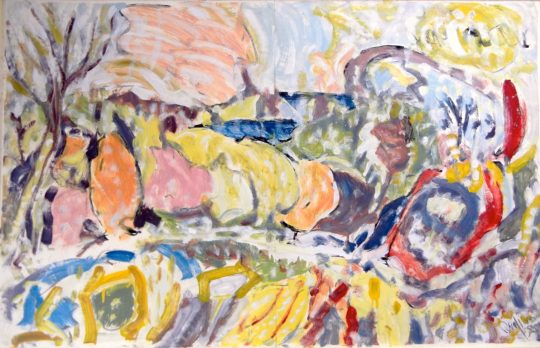 DETAILS
DETAILSUntitled Landscape, Bellport (No.0001), 1985
44 x 28 inches (111.76 x 71.12 cm) -
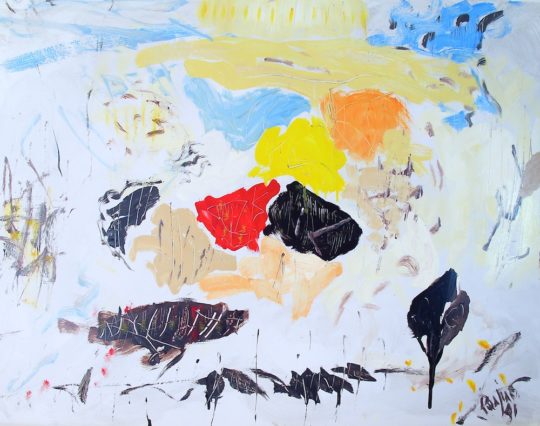 DETAILS
DETAILSUntitled Landscape, Bellport (No.1042), 1991
28 x 22 inches (71.12 x 55.88 cm) -
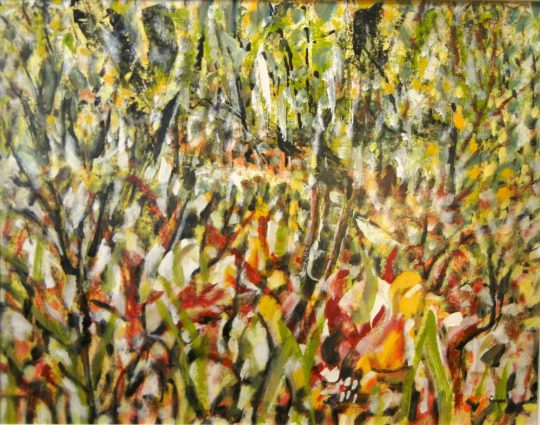 DETAILS
DETAILSUntitled Landscape, Bellport (No.1074), 1984
28 x 22 inches (71.12 x 55.88 cm) -
 DETAILS
DETAILSUntitled Landscape, Bellport (No.1137), 1984
28 x 22 inches (71.12 x 55.88 cm) -
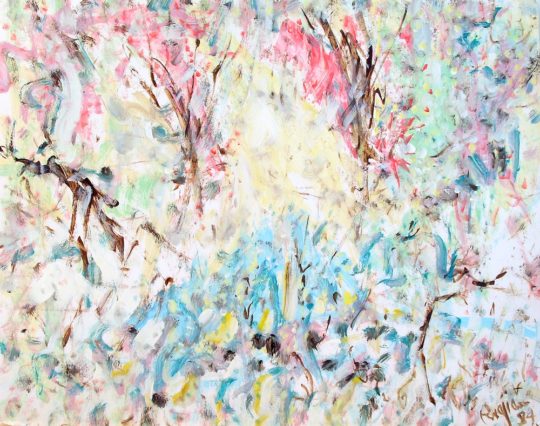 DETAILS
DETAILSUntitled Landscape, Bellport (No.1168), 1984
28 x 22 inches (71.12 x 55.88 cm) -
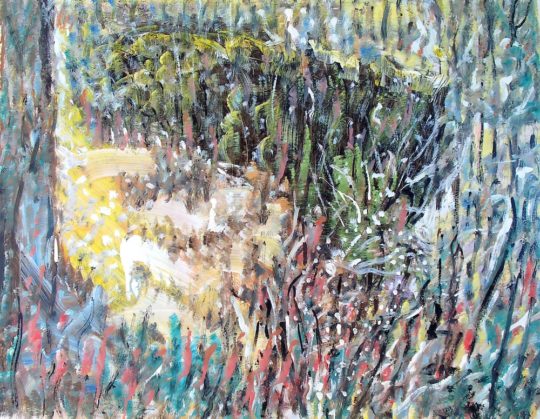 DETAILS
DETAILSUntitled Landscape, Bellport (No.1198), 1987
28 x 22 inches (71.12 x 55.88 cm) -
 DETAILS
DETAILSUntitled Landscape, Bellport (No.1253), 1984
28 x 22 inches (71.12 x 55.88 cm) -
 DETAILS
DETAILSUntitled Landscape, Bellport (No.1256), 1986
28 x 22 inches (71.12 x 55.88 cm) -
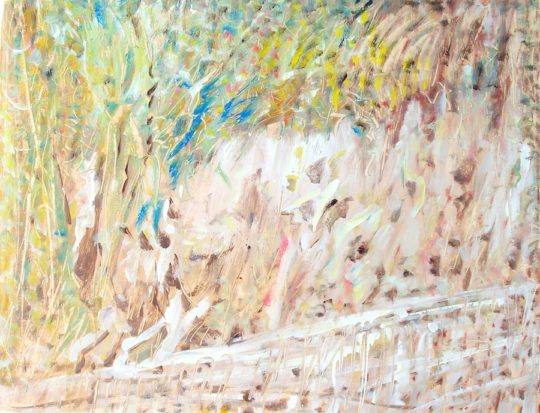 DETAILS
DETAILSUntitled Landscape, Bellport (No.1261), 1987
28 x 22 inches (71.12 x 55.88 cm) -
 DETAILS
DETAILSUntitled Landscape, Bellport (No.215), 1988
33 x 24 inches (83.82 x 60.96 cm) -
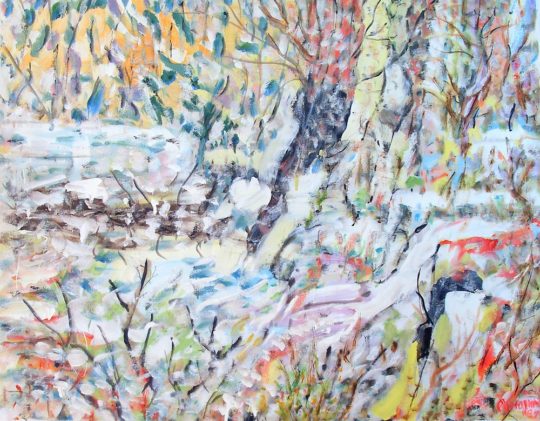 DETAILS
DETAILSUntitled Landscape, Bellport (No.224), 1989
32 x 25 inches (81.28 x 63.5 cm) -
 DETAILS
DETAILSUntitled Landscape, Bellport (No.227), 1981
32 x 25 inches (81.28 x 63.5 cm) -
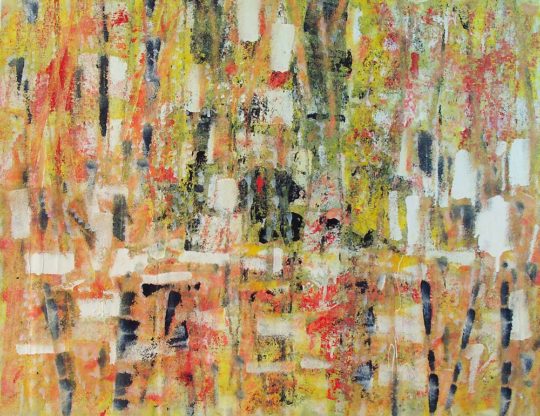 DETAILS
DETAILSUntitled Landscape, Bellport (No.243), 1984
32 x 24 inches (81.28 x 60.96 cm) -
 DETAILS
DETAILSUntitled Landscape, Bellport (No.252), 1988
32 x 24 inches (81.28 x 60.96 cm) -
 DETAILS
DETAILSUntitled Landscape, Bellport (No.256), 1990
30 x 24 inches (76.2 x 60.96 cm) -
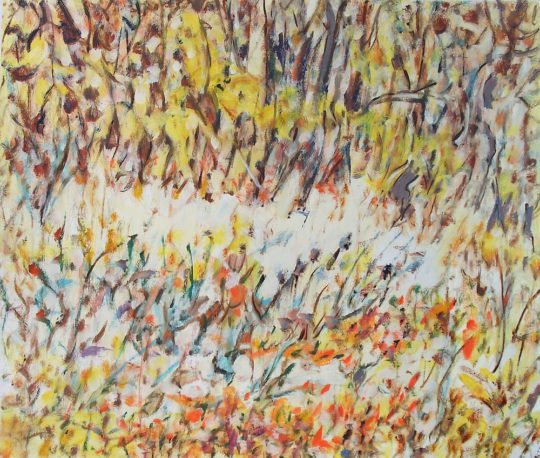 DETAILS
DETAILSUntitled Landscape, Bellport (No.257), 1987
29 x 25 inches (73.66 x 63.5 cm) -
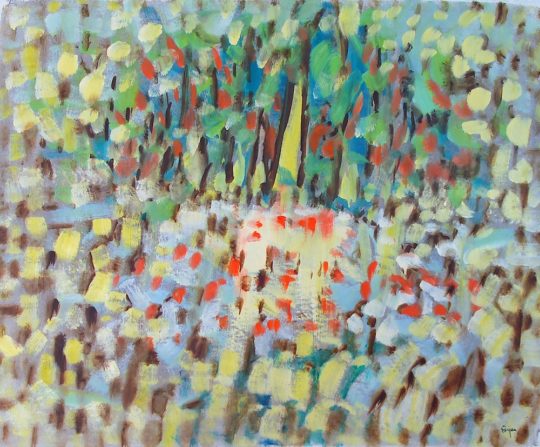 DETAILS
DETAILSUntitled Landscape, Bellport (No.257), 1986
31 x 25 inches (78.74 x 63.5 cm) -
 DETAILS
DETAILSUntitled Landscape, Bellport (No.260), 1991
32 x 25 inches (81.28 x 63.5 cm) -
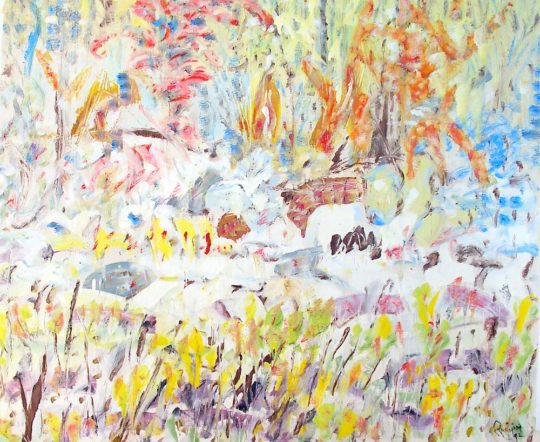 DETAILS
DETAILSUntitled Landscape, Bellport (No.271), 1992
30 x 25 inches (76.2 x 63.5 cm) -
 DETAILS
DETAILSUntitled Landscape, Bellport (No.341), 1987
34 x 25 inches (86.36 x 63.5 cm) -
 DETAILS
DETAILSUntitled Landscape, Bellport (No.347), 1982
29 x 25 inches (73.66 x 63.5 cm) -
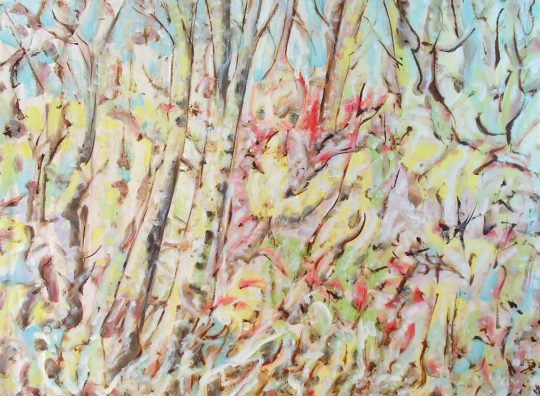 DETAILS
DETAILSUntitled Landscape, Bellport (No.359), 1987
34 x 25 inches (86.36 x 63.5 cm) -
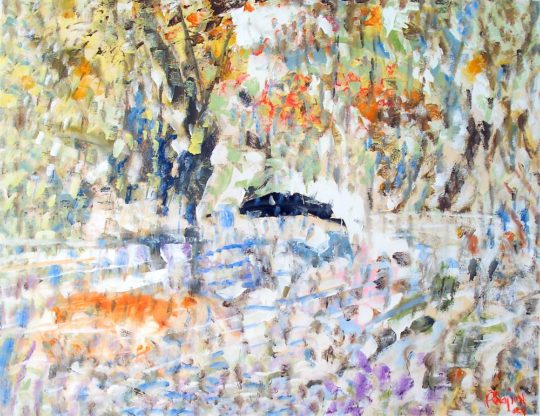 DETAILS
DETAILSUntitled Landscape, Bellport (No.3720), 1989
32 x 25 inches (81.28 x 63.5 cm) -
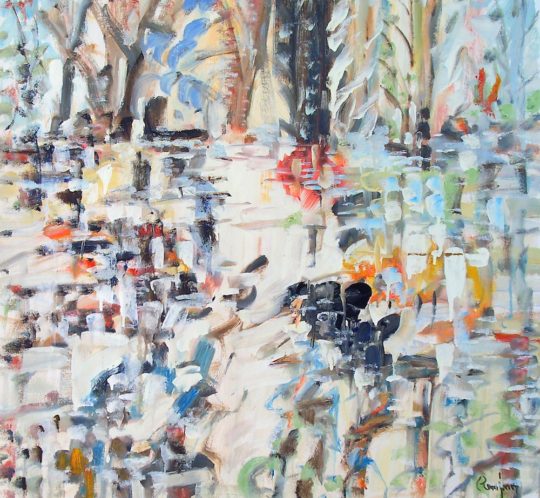 DETAILS
DETAILSUntitled Landscape, Bellport (No.3754), 1990
26 x 24 inches (66.04 x 60.96 cm) -
 DETAILS
DETAILSUntitled Landscape, Bellport (No.3763), 1991
32 x 25 inches (81.28 x 63.5 cm) -
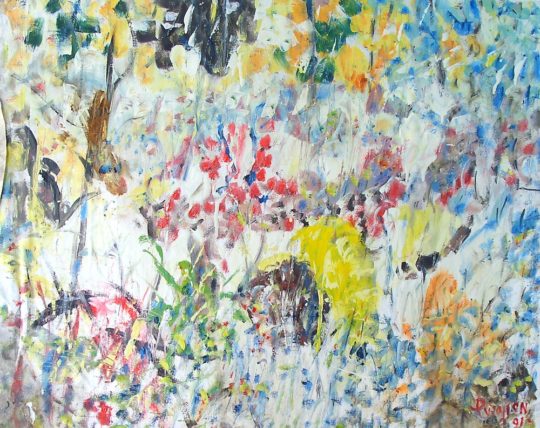 DETAILS
DETAILSUntitled Landscape, Bellport (No.3784), 1991
34 x 27 inches (86.36 x 68.58 cm) -
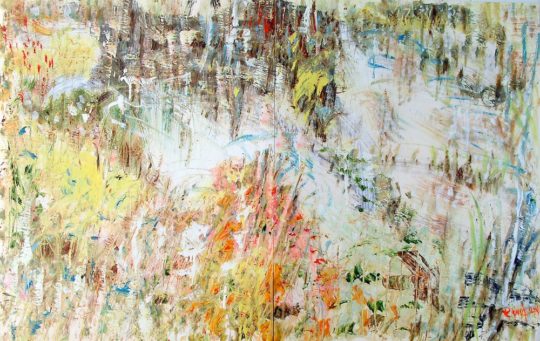 DETAILS
DETAILSUntitled Landscape, Bellport (No.4317), 1989
44 x 28 inches (111.76 x 71.12 cm) -
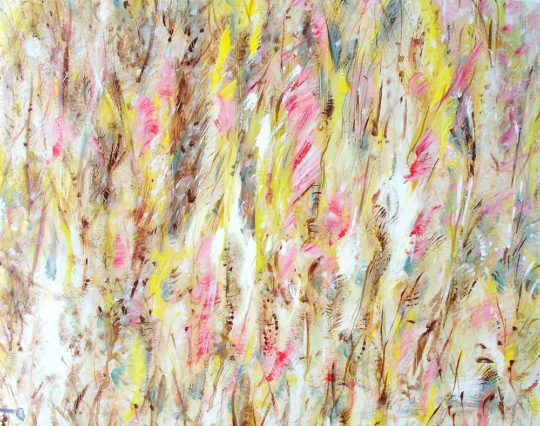 DETAILS
DETAILSUntitled Landscape, Bellport (No.732), 1992
28 x 22 inches (71.12 x 55.88 cm) -
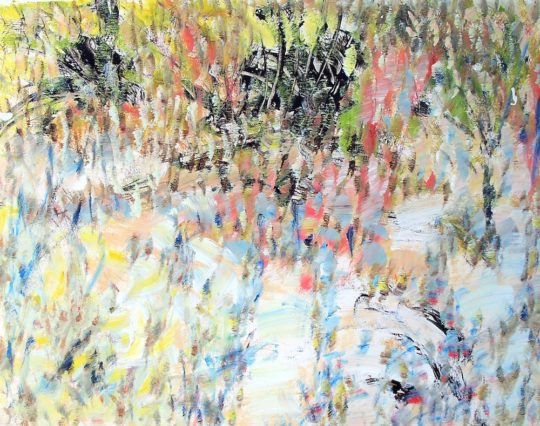 DETAILS
DETAILSUntitled Landscape, Bellport (No.761), 1987
28 x 22 inches (71.12 x 55.88 cm) -
 DETAILS
DETAILSUntitled Landscape, Bellport (No.942), 1984
28 x 22 inches (71.12 x 55.88 cm) -
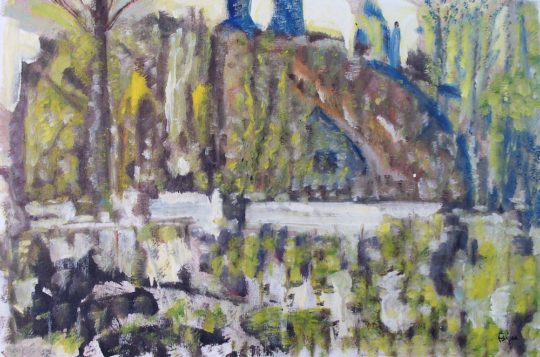 DETAILS
DETAILSUntitled Landscape, Bellport (No.95), 1991
23 x 16 inches (58.42 x 40.64 cm) -
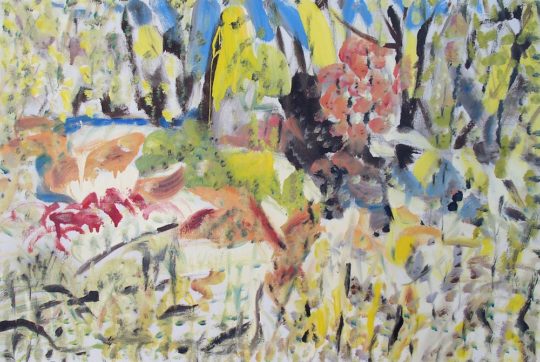 DETAILS
DETAILSUntitled Landscape, Bellport (No.96), 1991
24 x 16.5 inches (60.96 x 41.91 cm) -
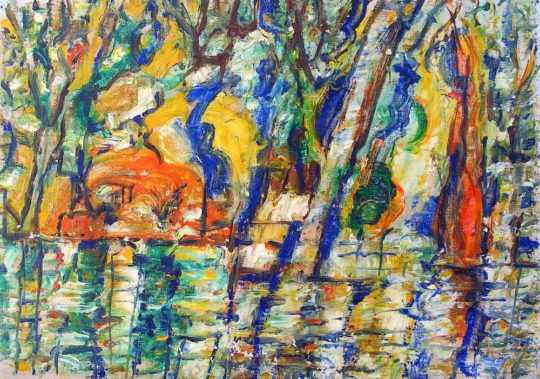 DETAILS
DETAILSUntitled Landscape, Woodstock (No.133), 1973
20 x 14 inches (50.8 x 35.56 cm) -
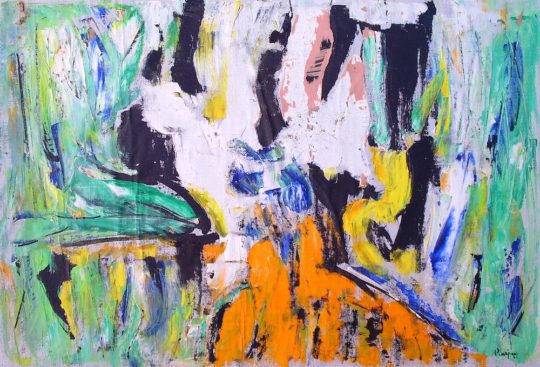 DETAILS
DETAILSUntitled Landscape, Woodstock (No.313), 1960
24 x 16 inches (60.96 x 40.64 cm) -
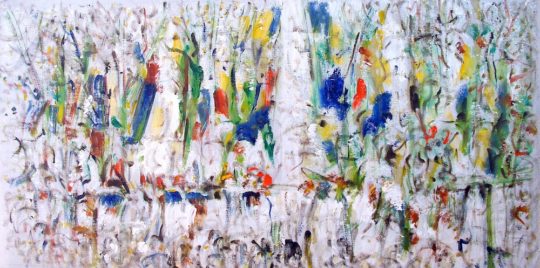 DETAILS
DETAILSUntitled Landscape, Woodstock (No.323), 1971
29 x 15 inches (73.66 x 38.1 cm) -
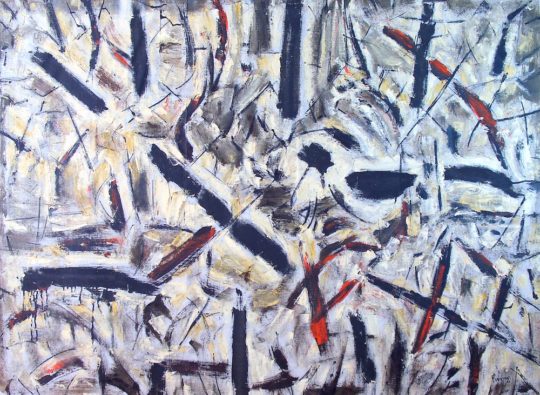 DETAILS
DETAILSUntitled Landscape, Woodstock (No.3868), 1960
50 x 36 inches (127 x 91.44 cm) -
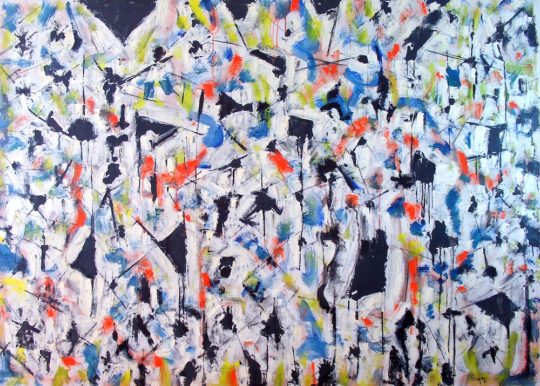 DETAILS
DETAILSUntitled Landscape, Woodstock (No.3876), 1960
50 x 36 inches (127 x 91.44 cm) -
 DETAILS
DETAILSUntitled Landscape, Woodstock (No.414), 1964
28 x 24 inches (71.12 x 60.96 cm) -
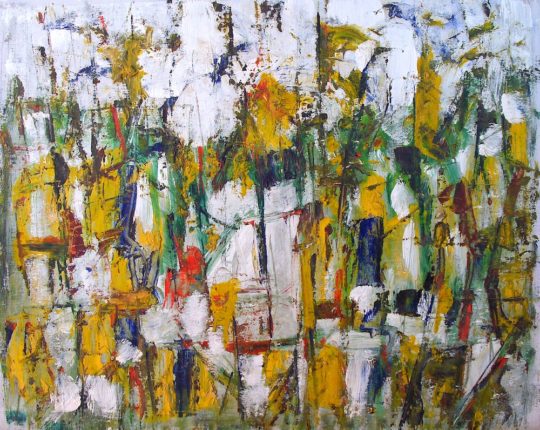 DETAILS
DETAILSUntitled Landscape, Woodstock (No.42), 1970
25 x 20 inches (63.5 x 50.8 cm) -
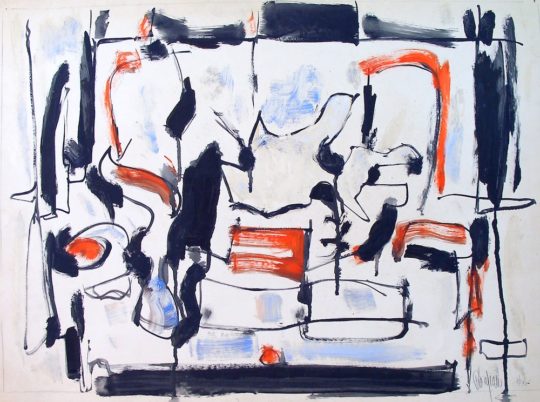 DETAILS
DETAILSUntitled Landscape, Woodstock (No.4386), 1958
28 x 22 inches (71.12 x 55.88 cm) -
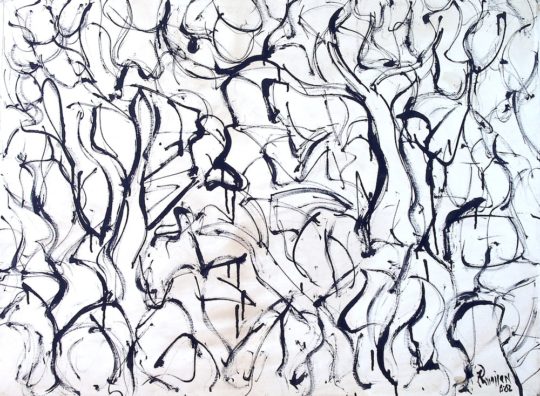 DETAILS
DETAILSUntitled Landscape, Woodstock (No.4398), 1962
34 x 25 inches (86.36 x 63.5 cm) -
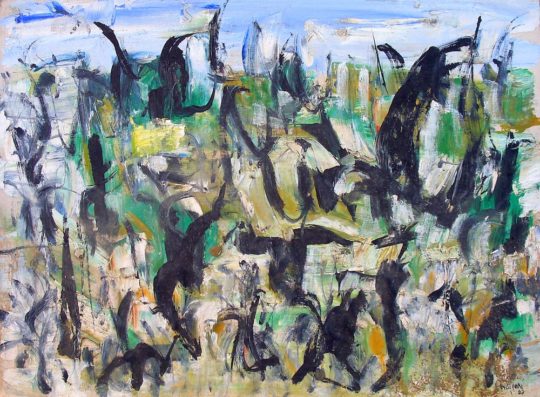 DETAILS
DETAILSUntitled Landscape, Woodstock (No.D153), 1962
16 x 12.5 inches (40.64 x 31.75 cm)
-
 DETAILS
DETAILSUntitled Landscape, Bellport (No.0001), 1985
44 x 28 inches (111.76 x 71.12 cm) -
 DETAILS
DETAILSUntitled Landscape, Bellport (No.1042), 1991
28 x 22 inches (71.12 x 55.88 cm) -
 DETAILS
DETAILSUntitled Landscape, Bellport (No.1074), 1984
28 x 22 inches (71.12 x 55.88 cm) -
 DETAILS
DETAILSUntitled Landscape, Bellport (No.1137), 1984
28 x 22 inches (71.12 x 55.88 cm) -
 DETAILS
DETAILSUntitled Landscape, Bellport (No.1168), 1984
28 x 22 inches (71.12 x 55.88 cm) -
 DETAILS
DETAILSUntitled Landscape, Bellport (No.1198), 1987
28 x 22 inches (71.12 x 55.88 cm) -
 DETAILS
DETAILSUntitled Landscape, Bellport (No.1253), 1984
28 x 22 inches (71.12 x 55.88 cm) -
 DETAILS
DETAILSUntitled Landscape, Bellport (No.1256), 1986
28 x 22 inches (71.12 x 55.88 cm) -
 DETAILS
DETAILSUntitled Landscape, Bellport (No.1261), 1987
28 x 22 inches (71.12 x 55.88 cm) -
 DETAILS
DETAILSUntitled Landscape, Bellport (No.215), 1988
33 x 24 inches (83.82 x 60.96 cm) -
 DETAILS
DETAILSUntitled Landscape, Bellport (No.224), 1989
32 x 25 inches (81.28 x 63.5 cm) -
 DETAILS
DETAILSUntitled Landscape, Bellport (No.227), 1981
32 x 25 inches (81.28 x 63.5 cm) -
 DETAILS
DETAILSUntitled Landscape, Bellport (No.243), 1984
32 x 24 inches (81.28 x 60.96 cm) -
 DETAILS
DETAILSUntitled Landscape, Bellport (No.252), 1988
32 x 24 inches (81.28 x 60.96 cm) -
 DETAILS
DETAILSUntitled Landscape, Bellport (No.256), 1990
30 x 24 inches (76.2 x 60.96 cm) -
 DETAILS
DETAILSUntitled Landscape, Bellport (No.257), 1987
29 x 25 inches (73.66 x 63.5 cm) -
 DETAILS
DETAILSUntitled Landscape, Bellport (No.257), 1986
31 x 25 inches (78.74 x 63.5 cm) -
 DETAILS
DETAILSUntitled Landscape, Bellport (No.260), 1991
32 x 25 inches (81.28 x 63.5 cm) -
 DETAILS
DETAILSUntitled Landscape, Bellport (No.271), 1992
30 x 25 inches (76.2 x 63.5 cm) -
 DETAILS
DETAILSUntitled Landscape, Bellport (No.341), 1987
34 x 25 inches (86.36 x 63.5 cm) -
 DETAILS
DETAILSUntitled Landscape, Bellport (No.347), 1982
29 x 25 inches (73.66 x 63.5 cm) -
 DETAILS
DETAILSUntitled Landscape, Bellport (No.359), 1987
34 x 25 inches (86.36 x 63.5 cm) -
 DETAILS
DETAILSUntitled Landscape, Bellport (No.3720), 1989
32 x 25 inches (81.28 x 63.5 cm) -
 DETAILS
DETAILSUntitled Landscape, Bellport (No.3754), 1990
26 x 24 inches (66.04 x 60.96 cm) -
 DETAILS
DETAILSUntitled Landscape, Bellport (No.3763), 1991
32 x 25 inches (81.28 x 63.5 cm) -
 DETAILS
DETAILSUntitled Landscape, Bellport (No.3784), 1991
34 x 27 inches (86.36 x 68.58 cm) -
 DETAILS
DETAILSUntitled Landscape, Bellport (No.4317), 1989
44 x 28 inches (111.76 x 71.12 cm) -
 DETAILS
DETAILSUntitled Landscape, Bellport (No.732), 1992
28 x 22 inches (71.12 x 55.88 cm) -
 DETAILS
DETAILSUntitled Landscape, Bellport (No.761), 1987
28 x 22 inches (71.12 x 55.88 cm) -
 DETAILS
DETAILSUntitled Landscape, Bellport (No.942), 1984
28 x 22 inches (71.12 x 55.88 cm) -
 DETAILS
DETAILSUntitled Landscape, Bellport (No.95), 1991
23 x 16 inches (58.42 x 40.64 cm) -
 DETAILS
DETAILSUntitled Landscape, Bellport (No.96), 1991
24 x 16.5 inches (60.96 x 41.91 cm) -
 DETAILS
DETAILSUntitled Landscape, Woodstock (No.133), 1973
20 x 14 inches (50.8 x 35.56 cm) -
 DETAILS
DETAILSUntitled Landscape, Woodstock (No.313), 1960
24 x 16 inches (60.96 x 40.64 cm) -
 DETAILS
DETAILSUntitled Landscape, Woodstock (No.323), 1971
29 x 15 inches (73.66 x 38.1 cm) -
 DETAILS
DETAILSUntitled Landscape, Woodstock (No.3868), 1960
50 x 36 inches (127 x 91.44 cm) -
 DETAILS
DETAILSUntitled Landscape, Woodstock (No.3876), 1960
50 x 36 inches (127 x 91.44 cm) -
 DETAILS
DETAILSUntitled Landscape, Woodstock (No.414), 1964
28 x 24 inches (71.12 x 60.96 cm) -
 DETAILS
DETAILSUntitled Landscape, Woodstock (No.42), 1970
25 x 20 inches (63.5 x 50.8 cm) -
 DETAILS
DETAILSUntitled Landscape, Woodstock (No.4386), 1958
28 x 22 inches (71.12 x 55.88 cm) -
 DETAILS
DETAILSUntitled Landscape, Woodstock (No.4398), 1962
34 x 25 inches (86.36 x 63.5 cm) -
 DETAILS
DETAILSUntitled Landscape, Woodstock (No.D153), 1962
16 x 12.5 inches (40.64 x 31.75 cm)
No Press releases found.
No News found.
No Events Found.

